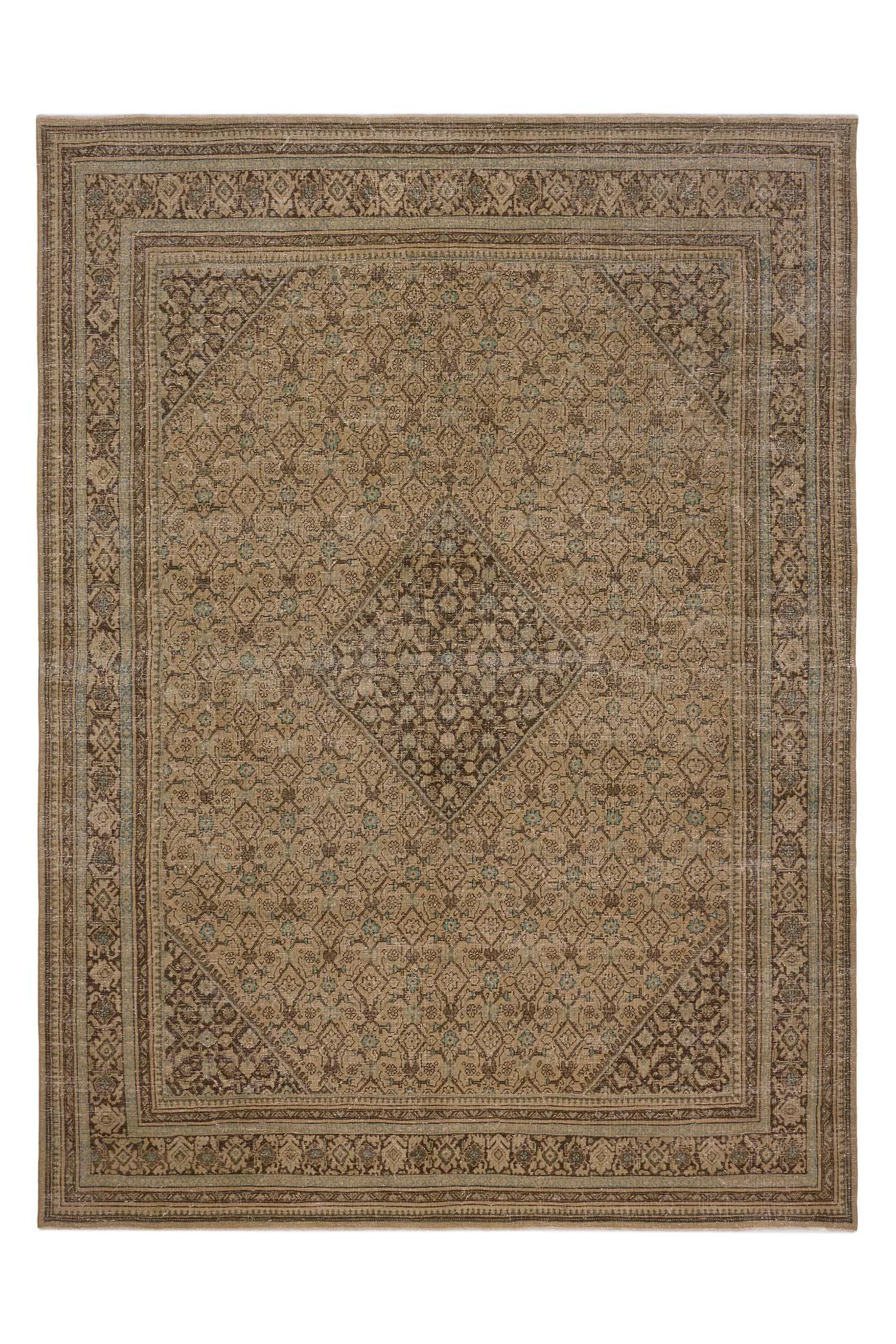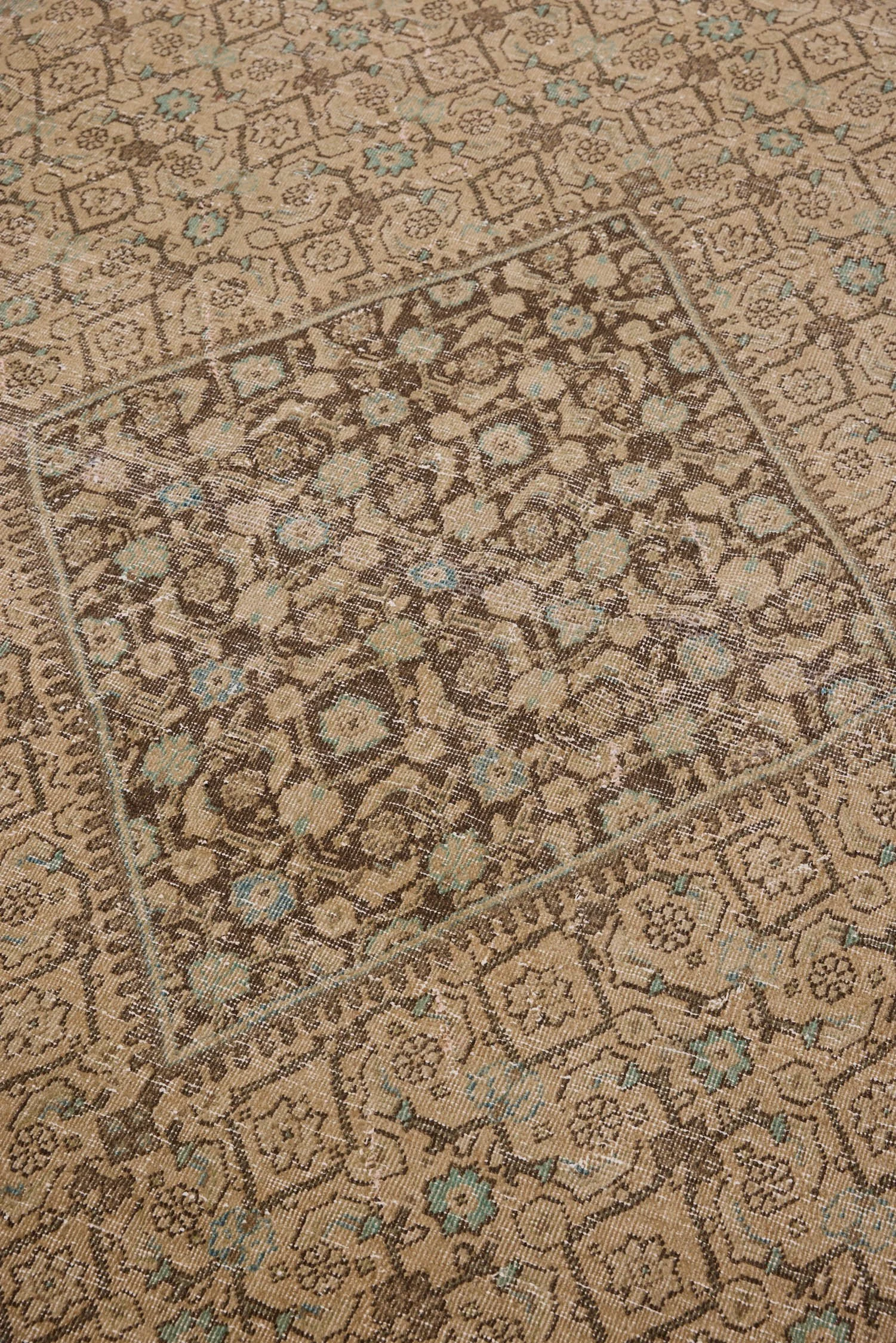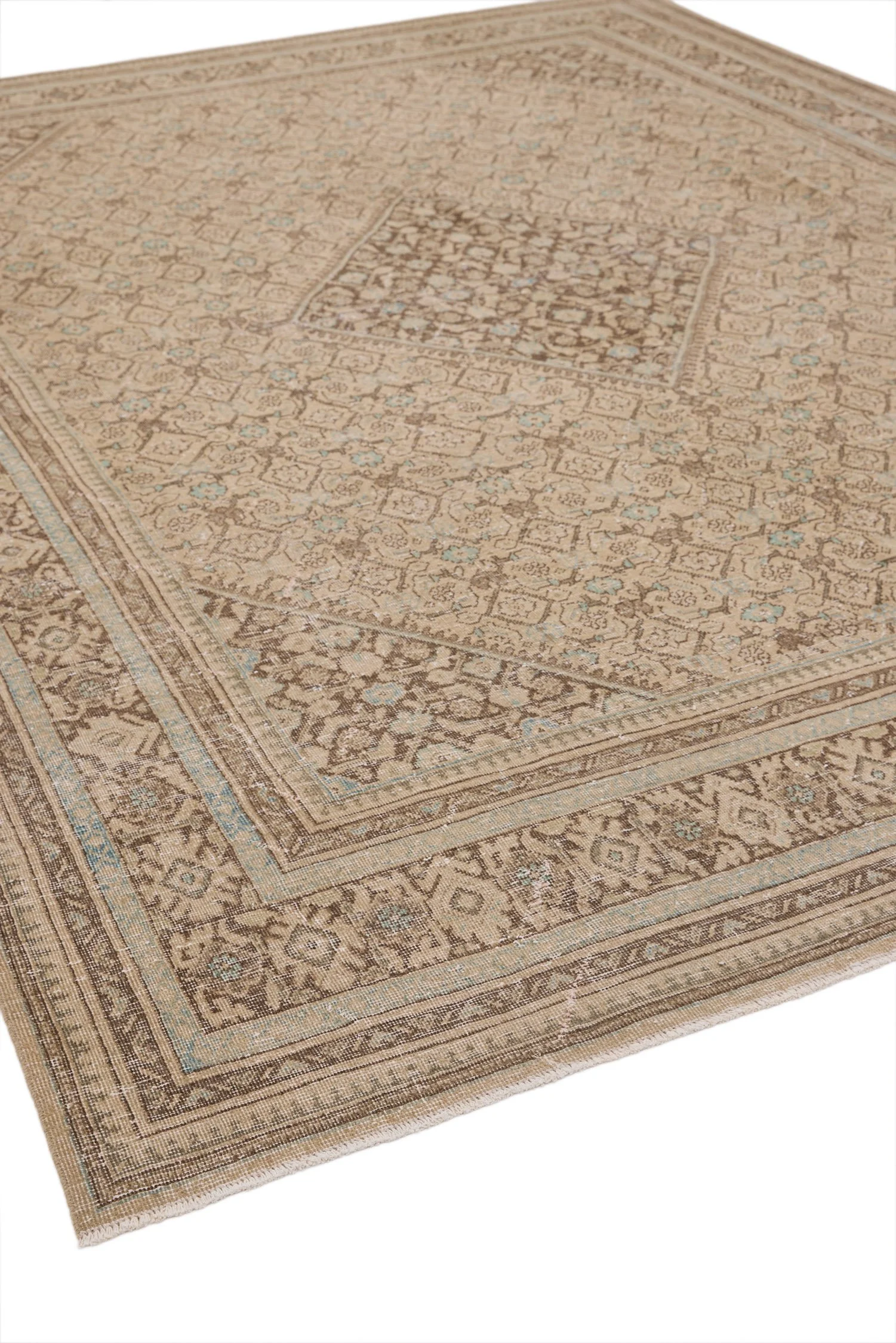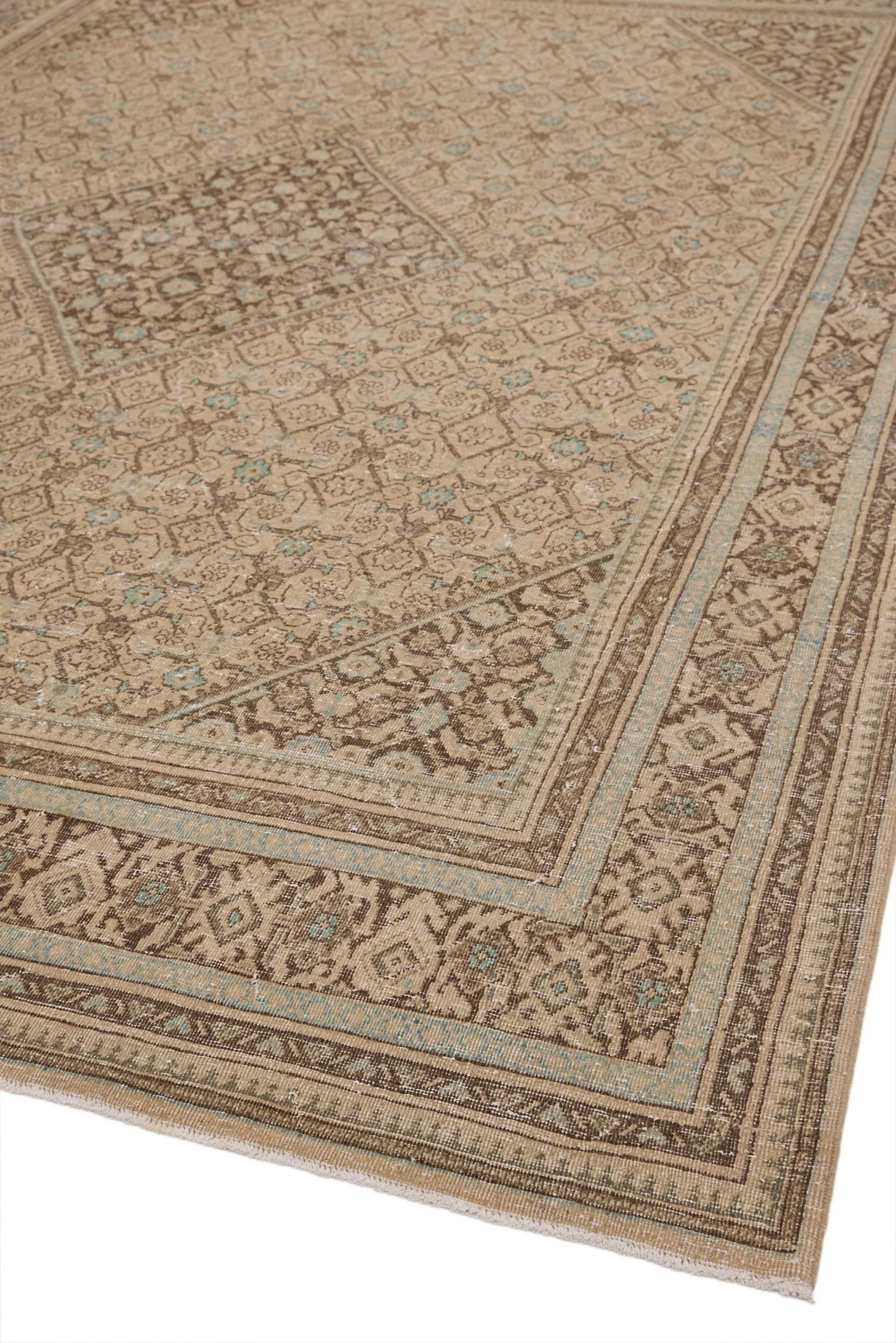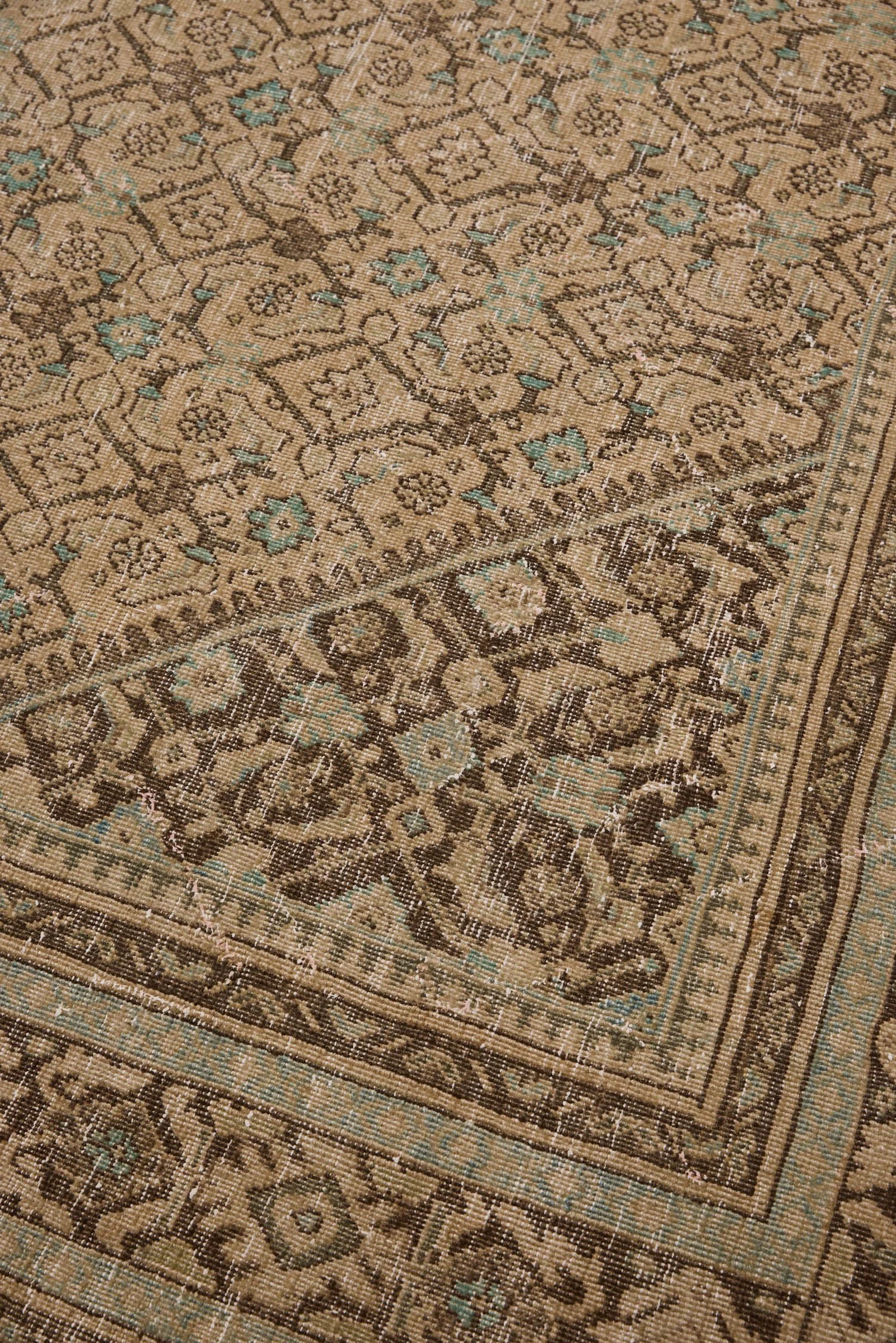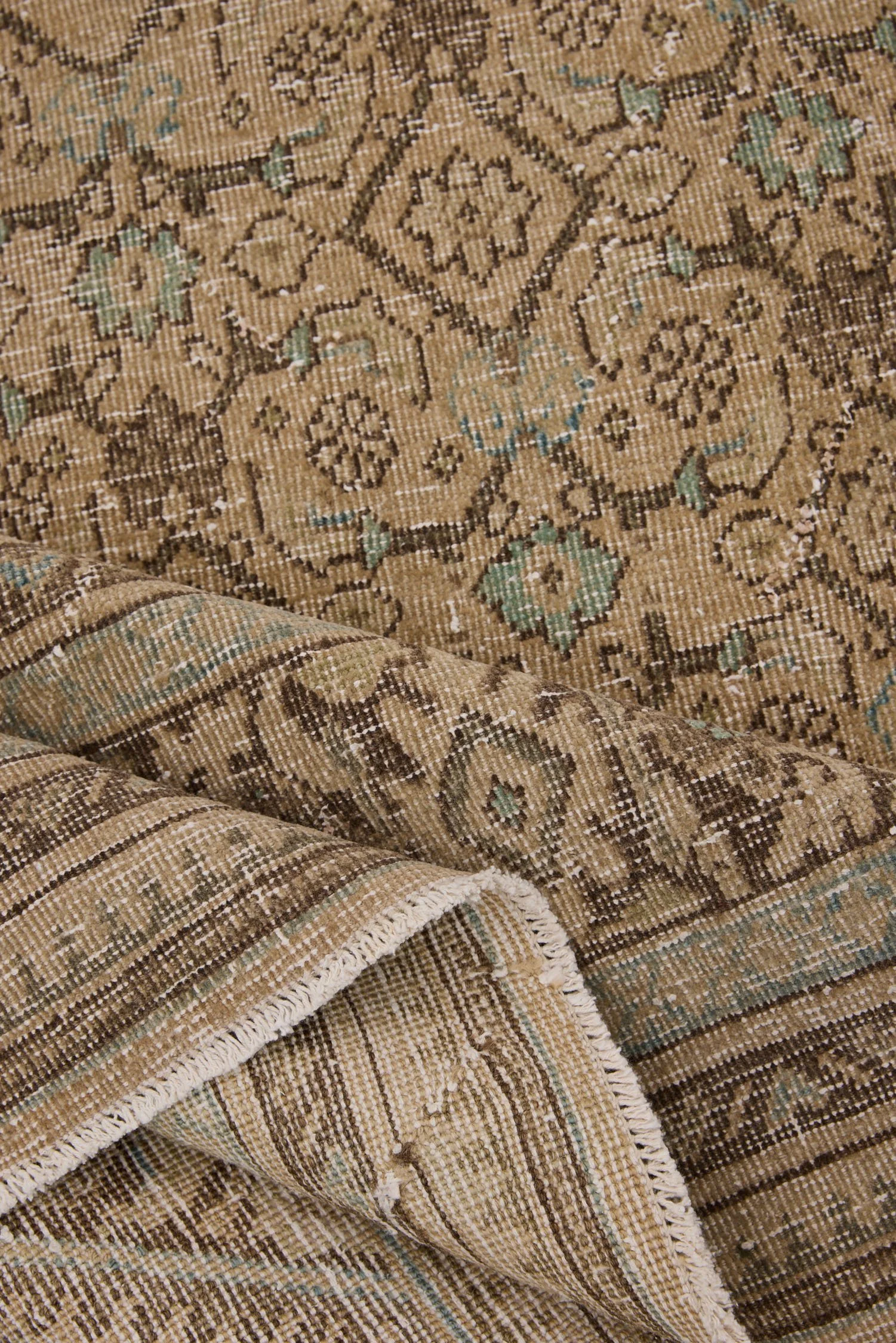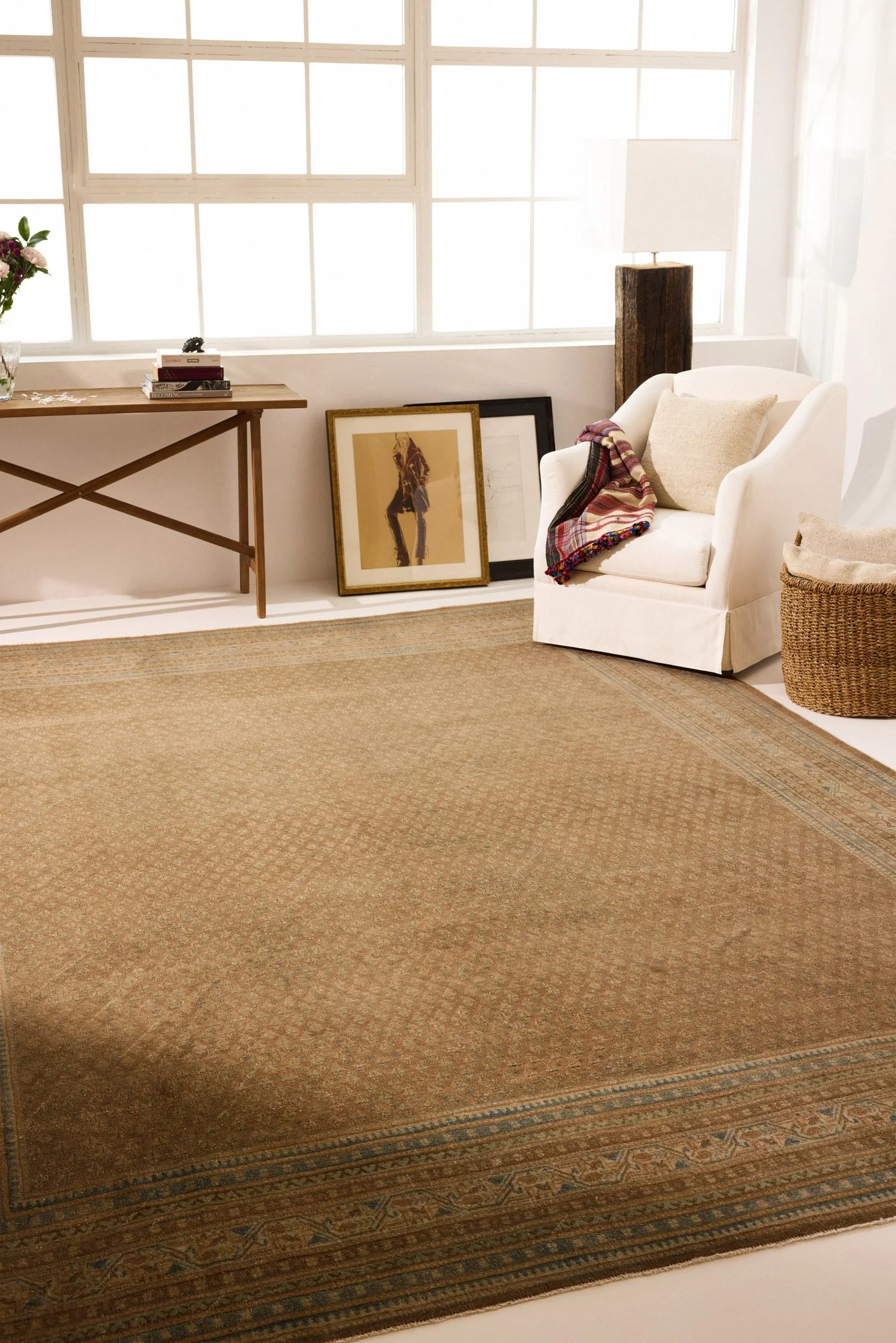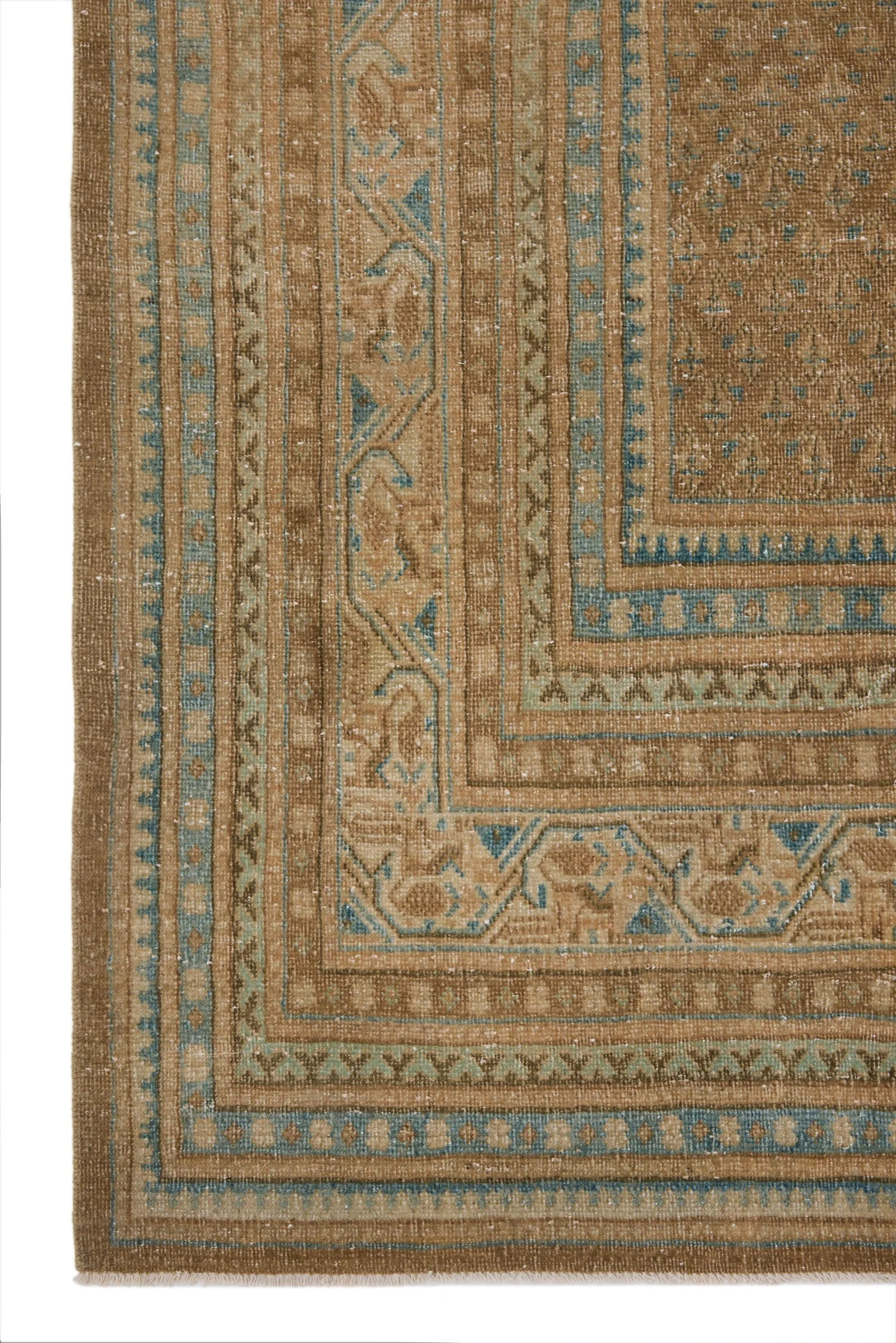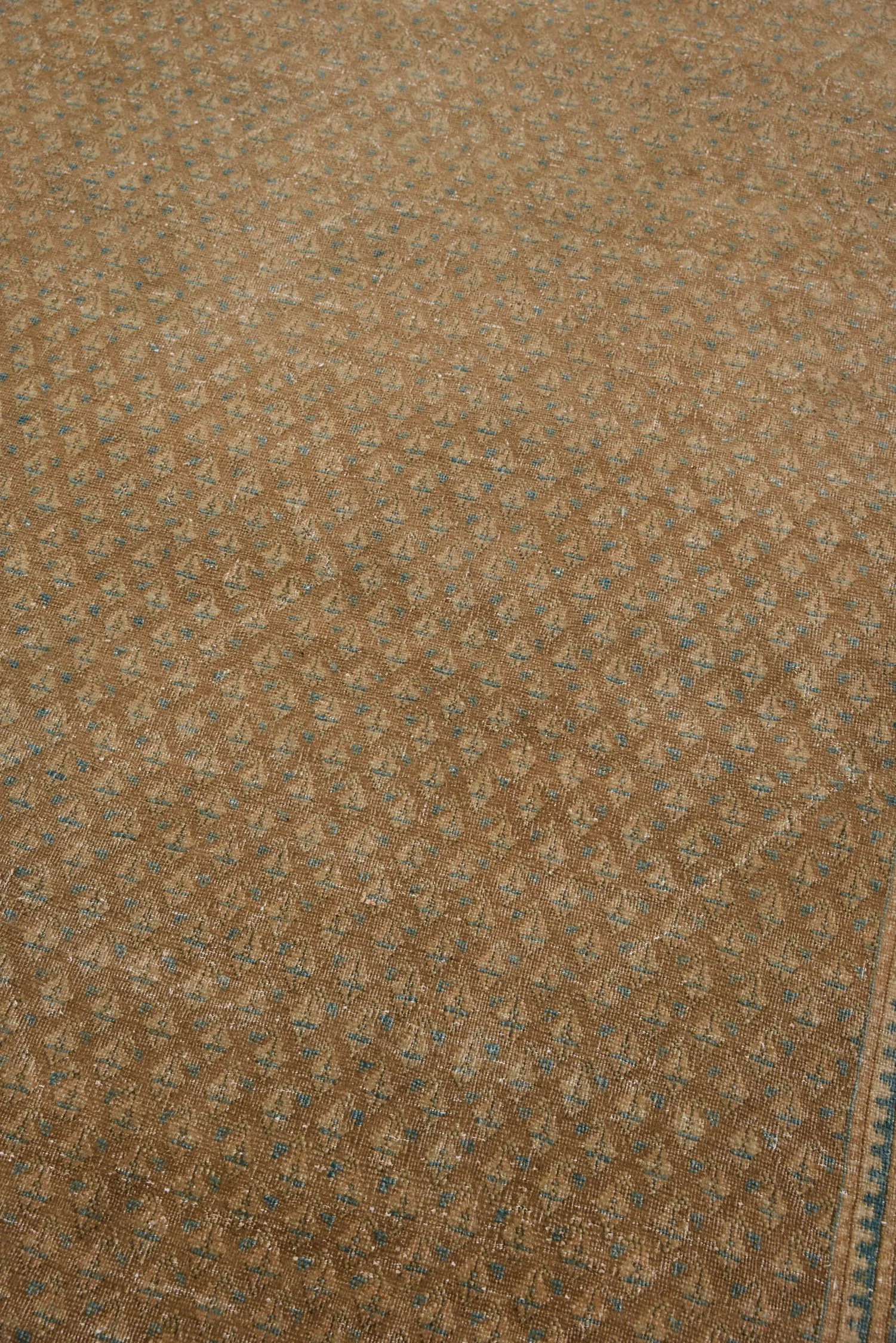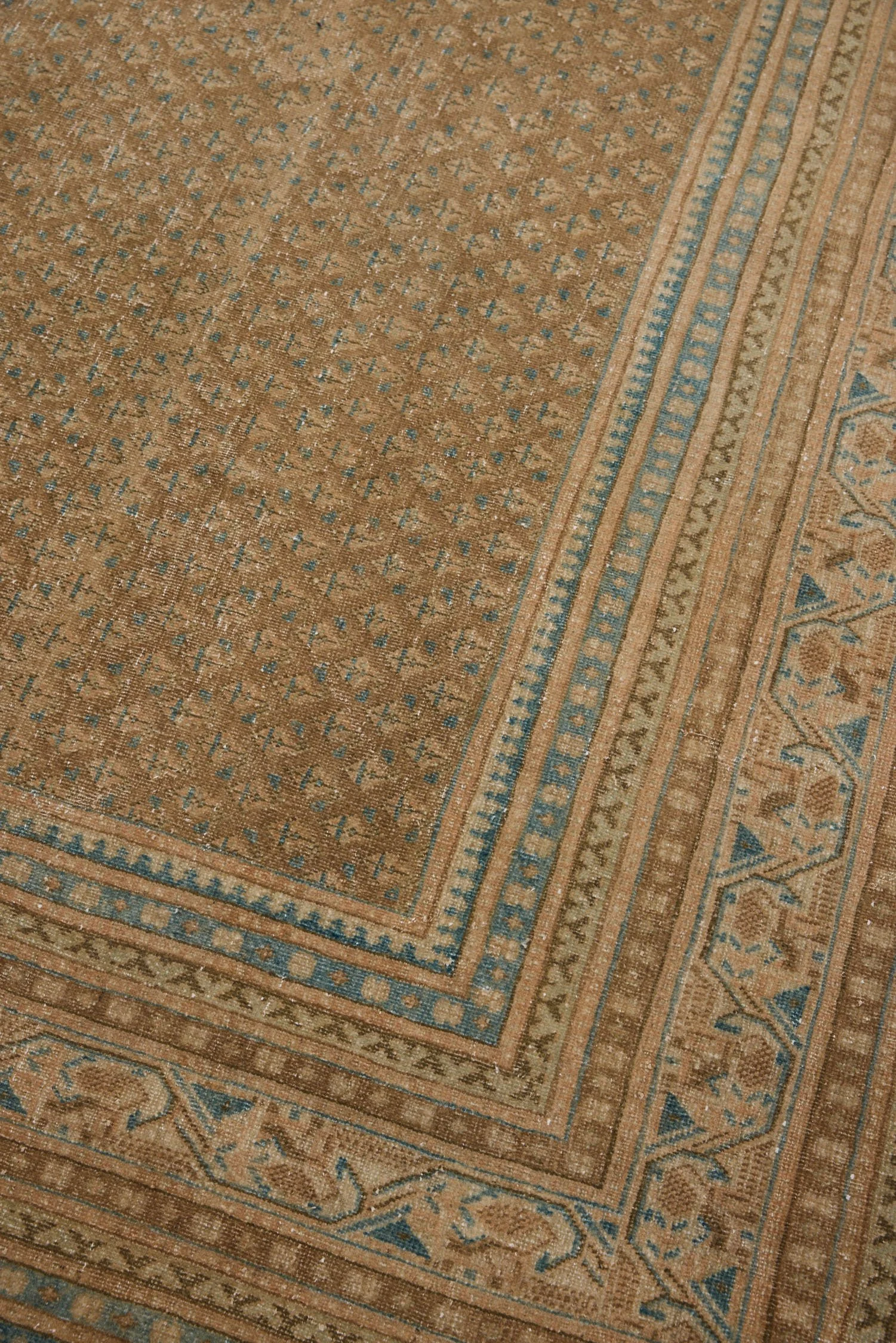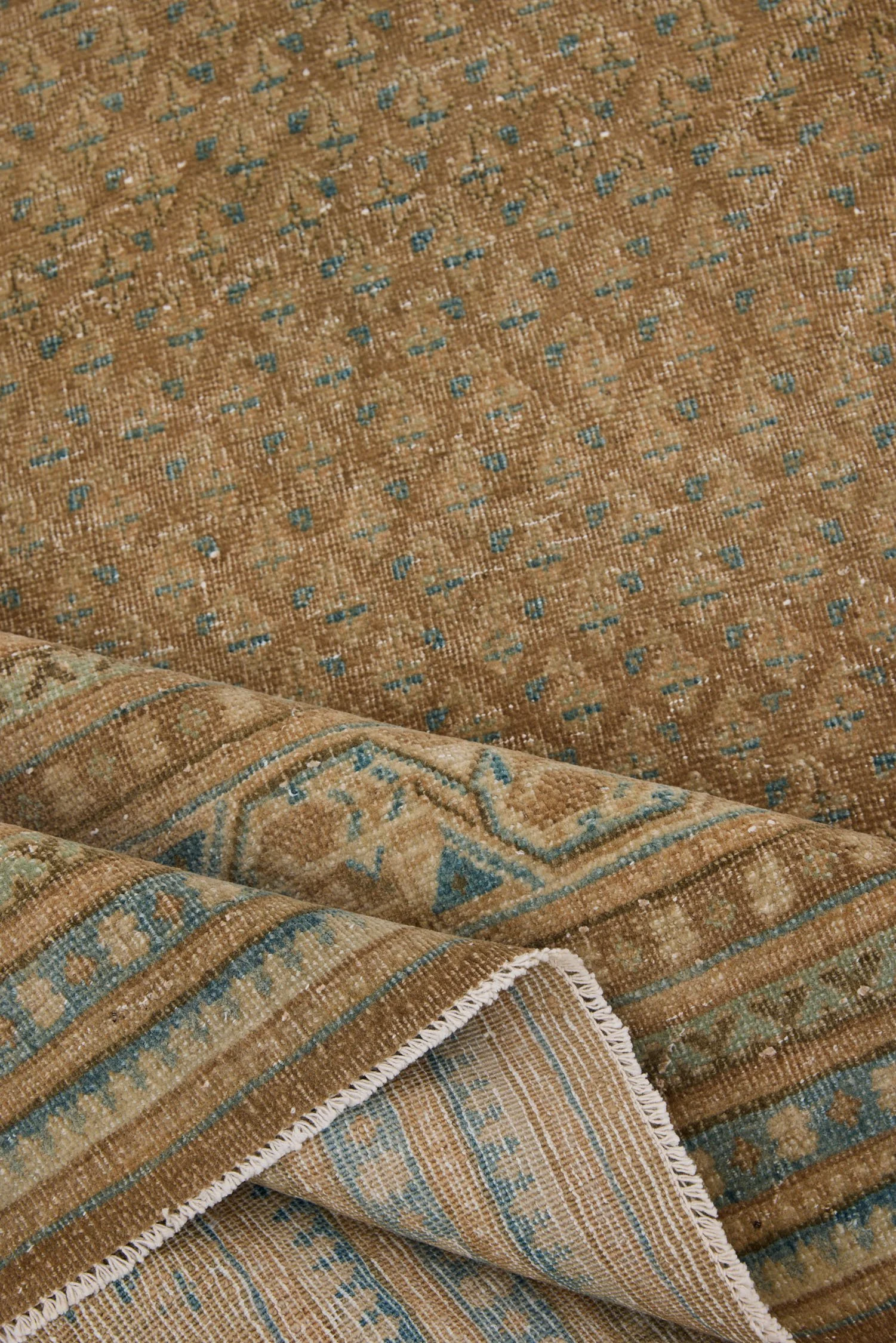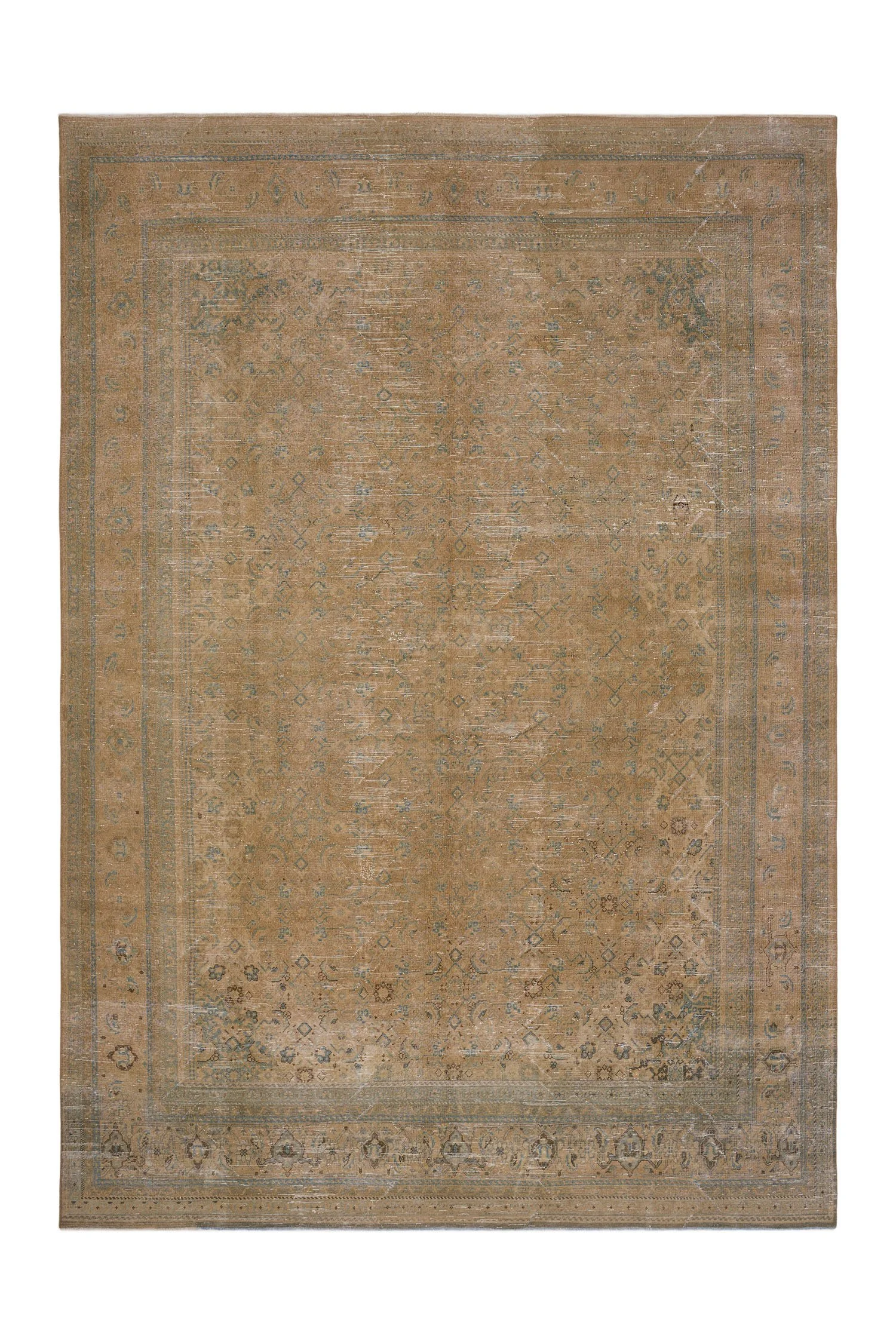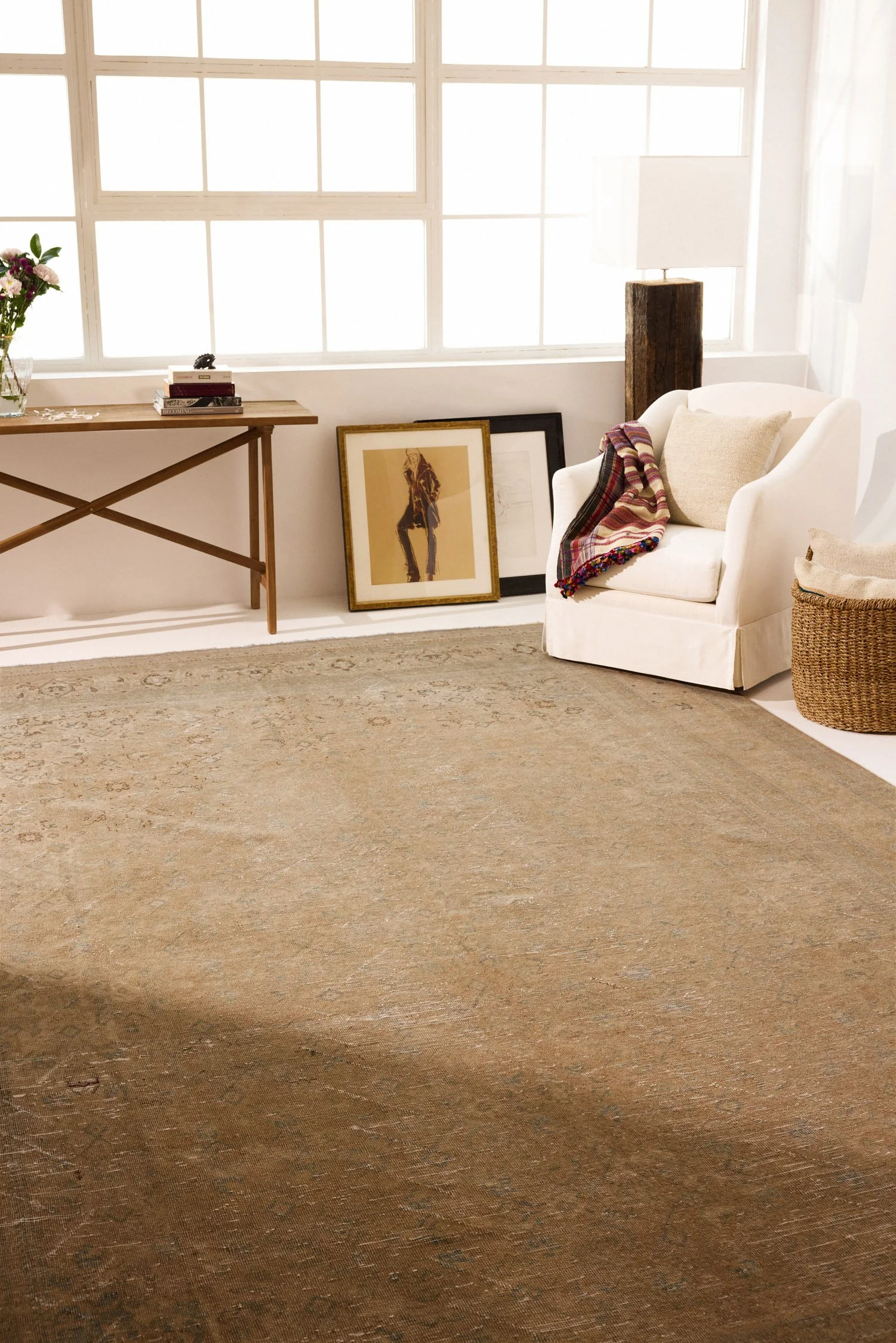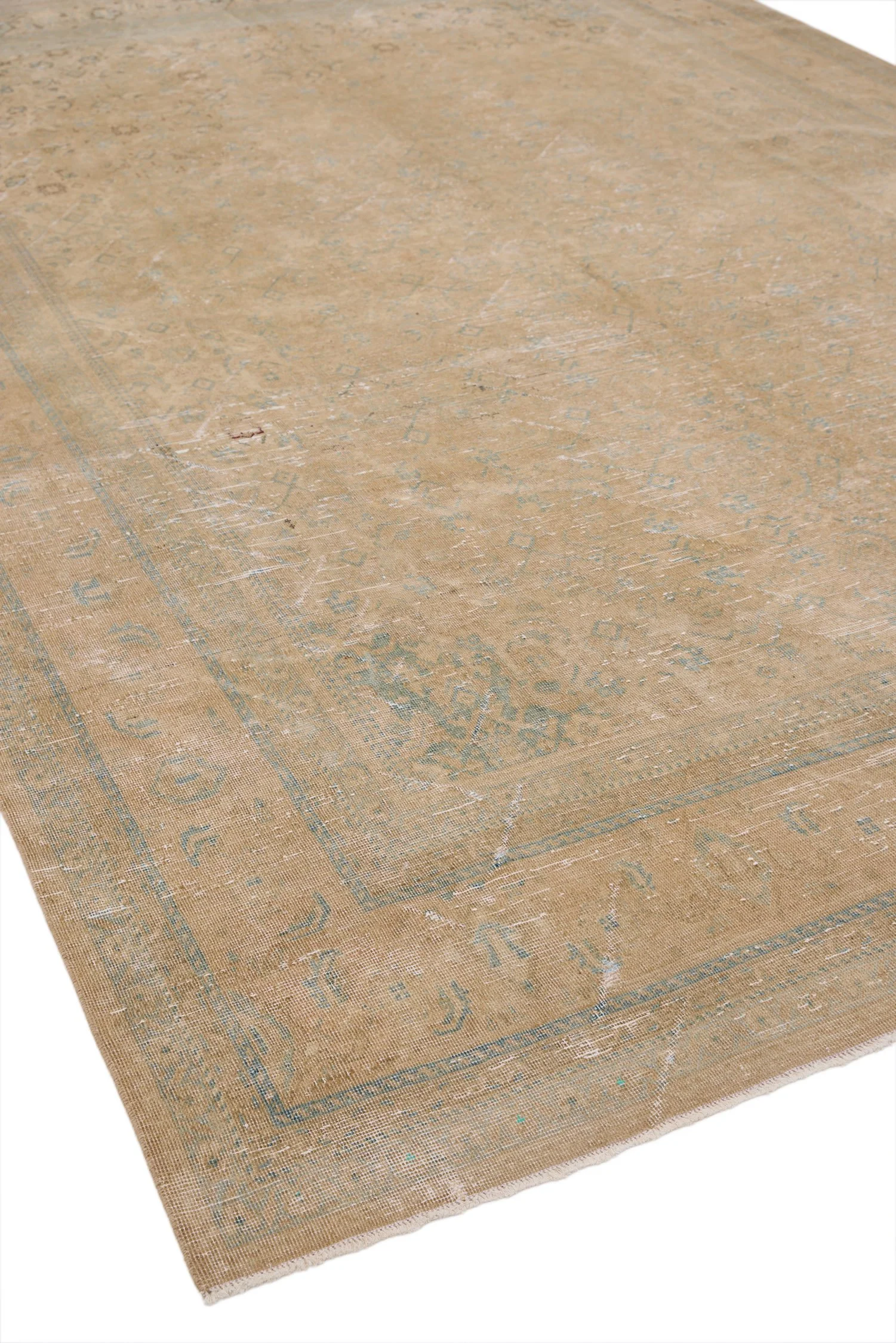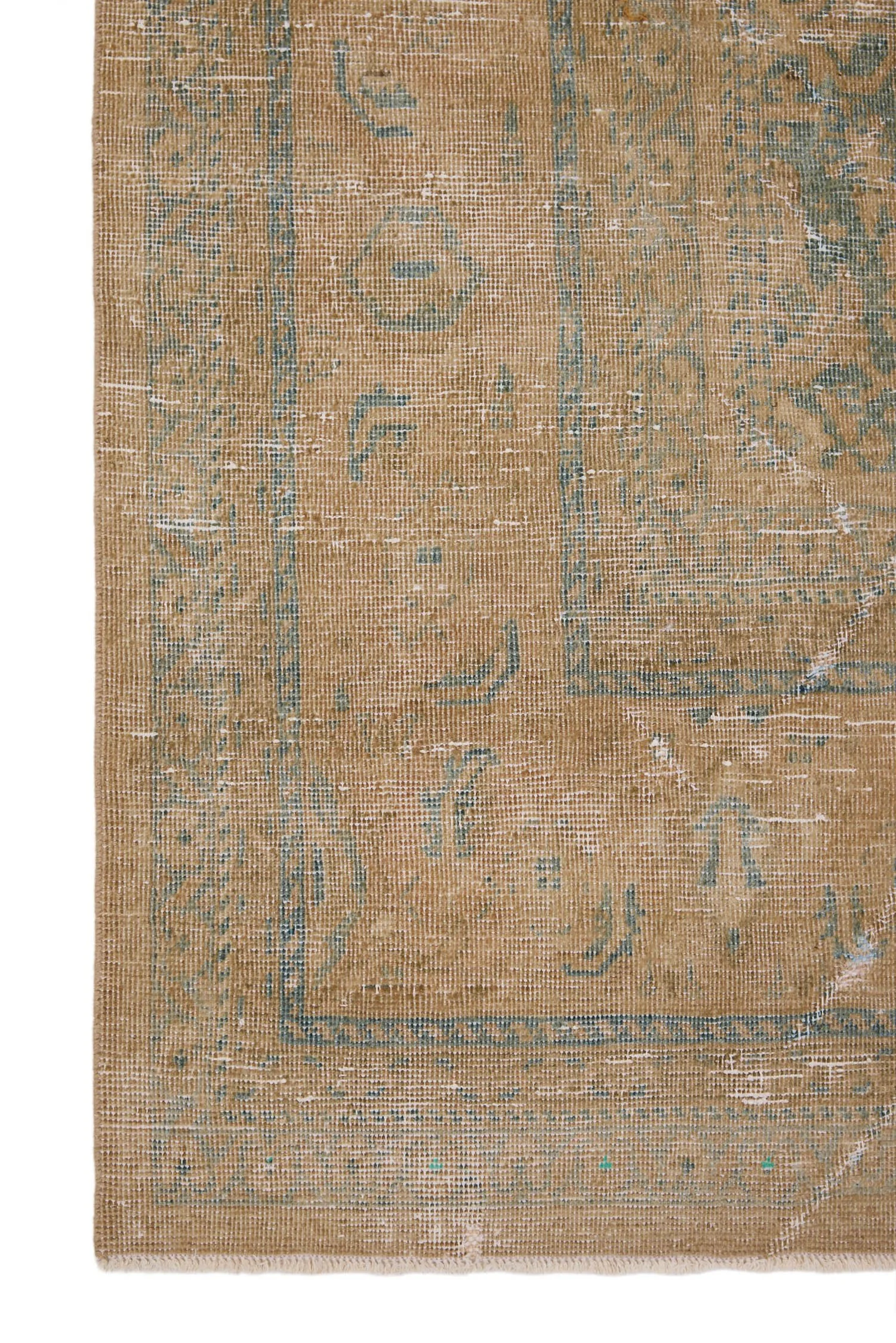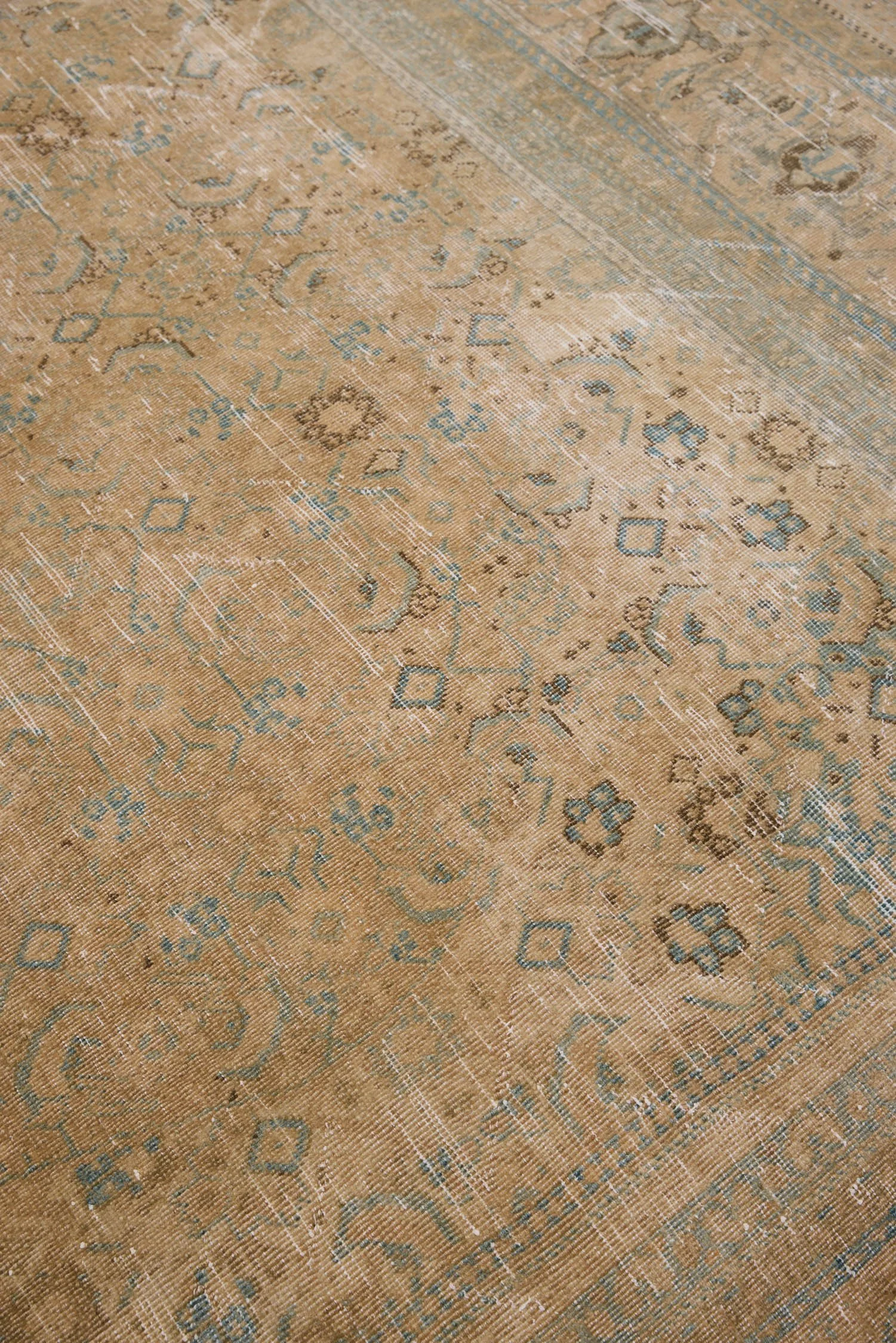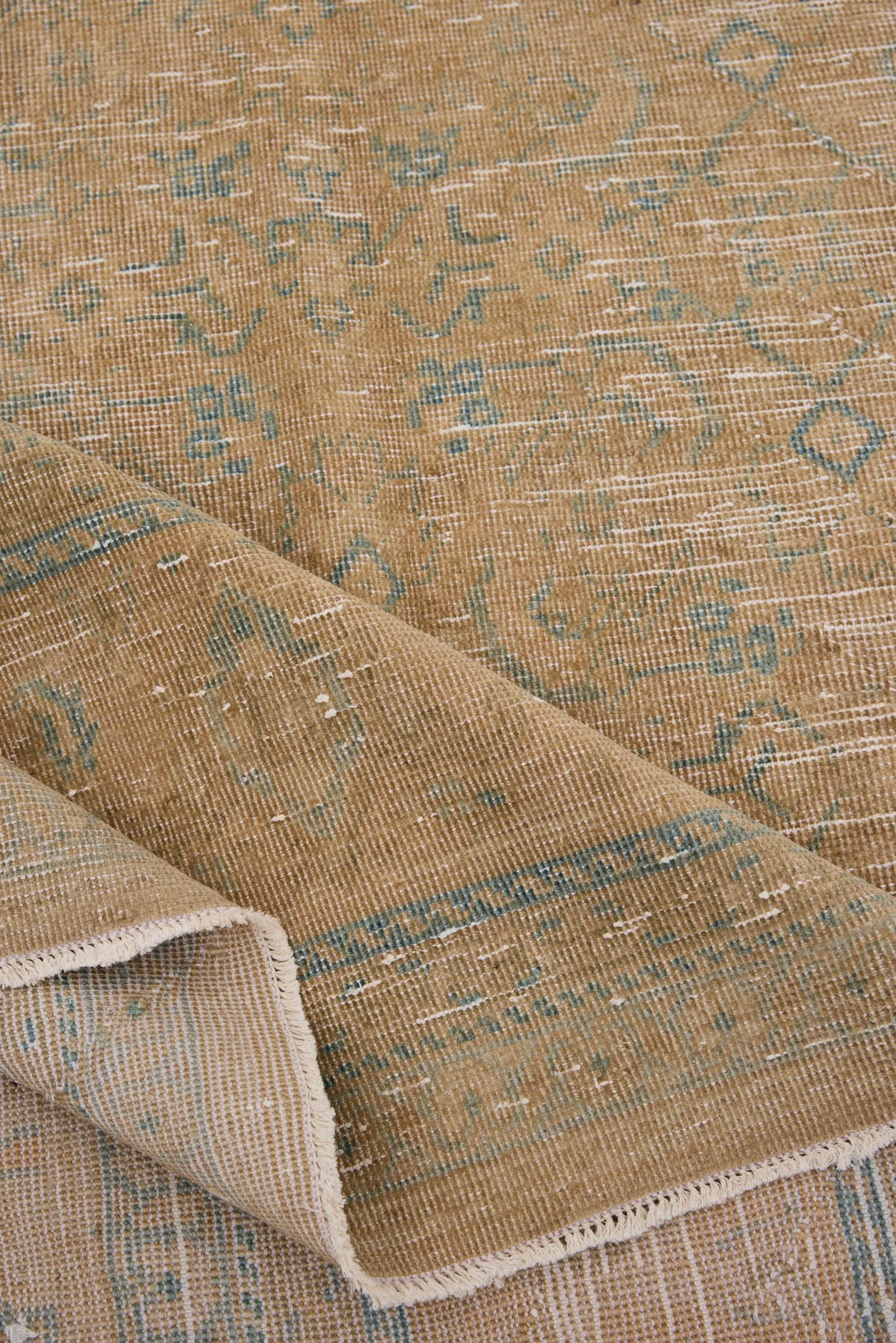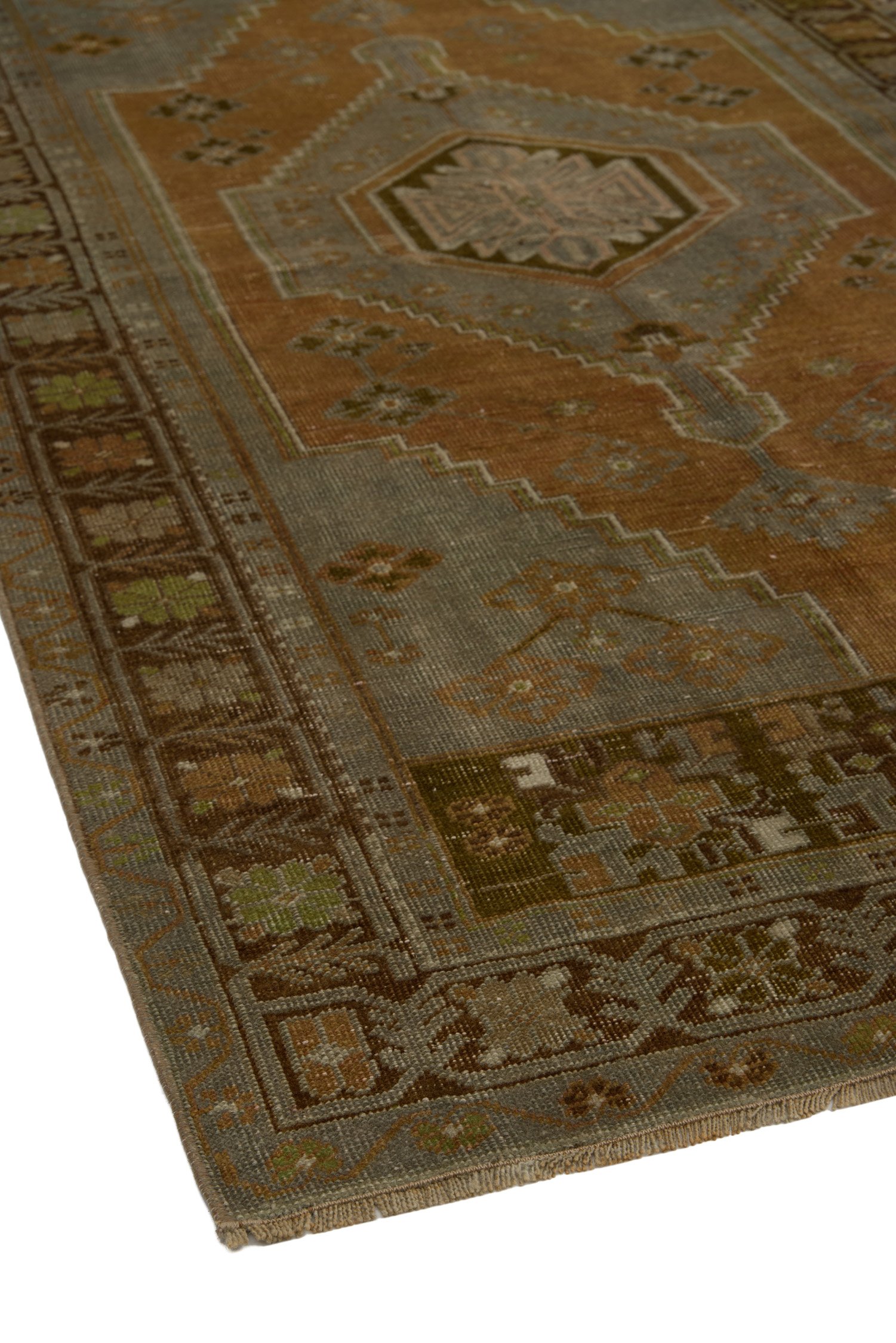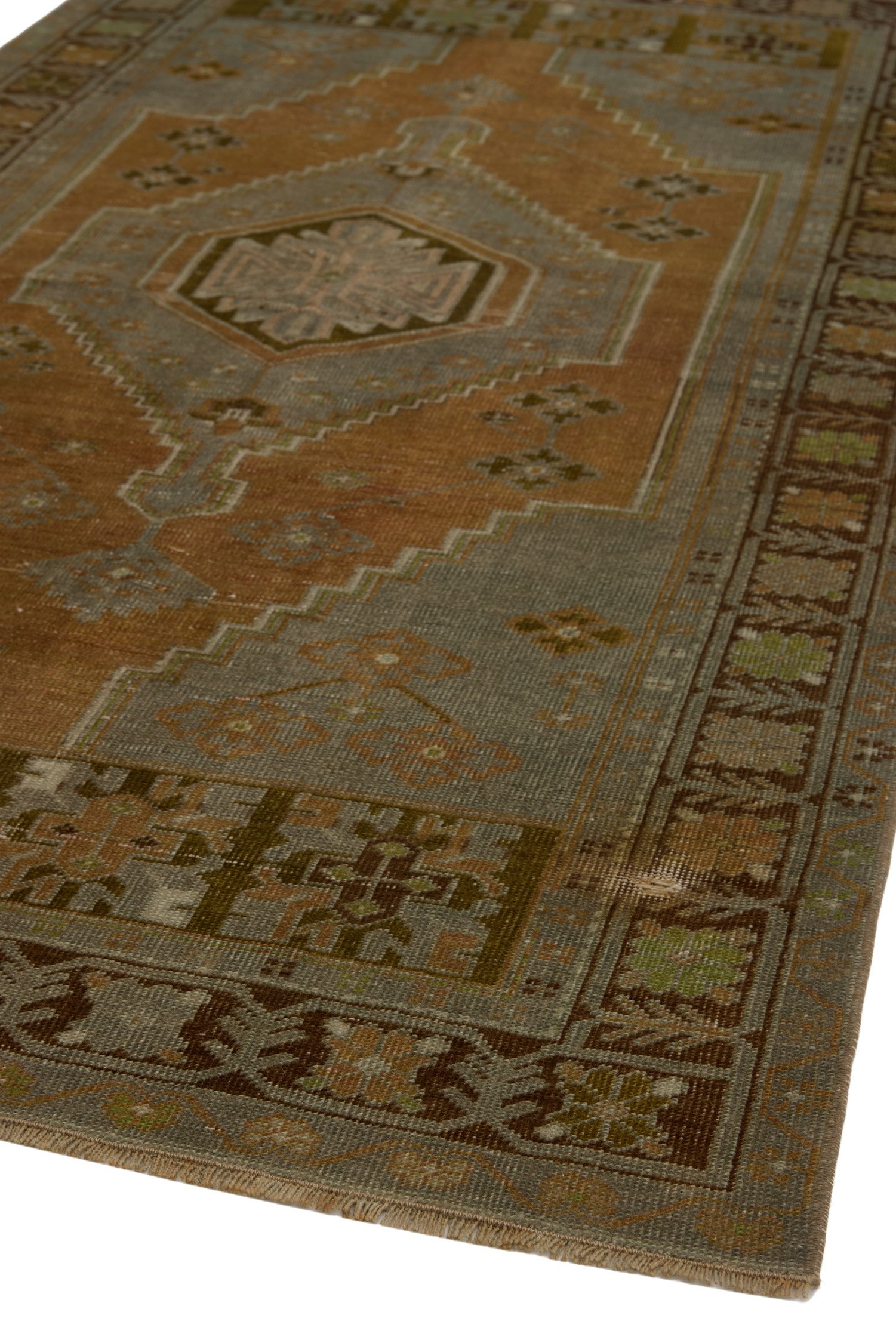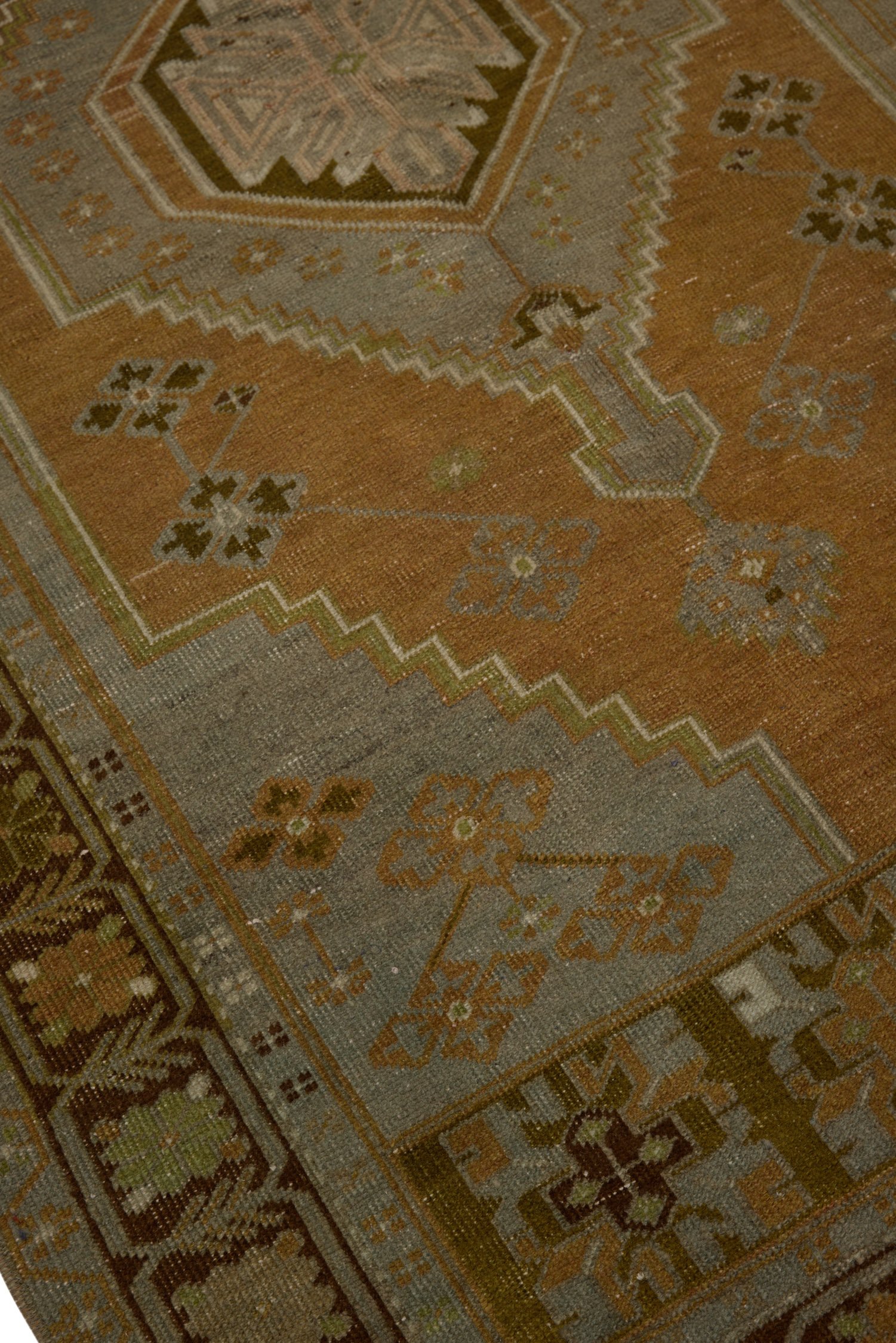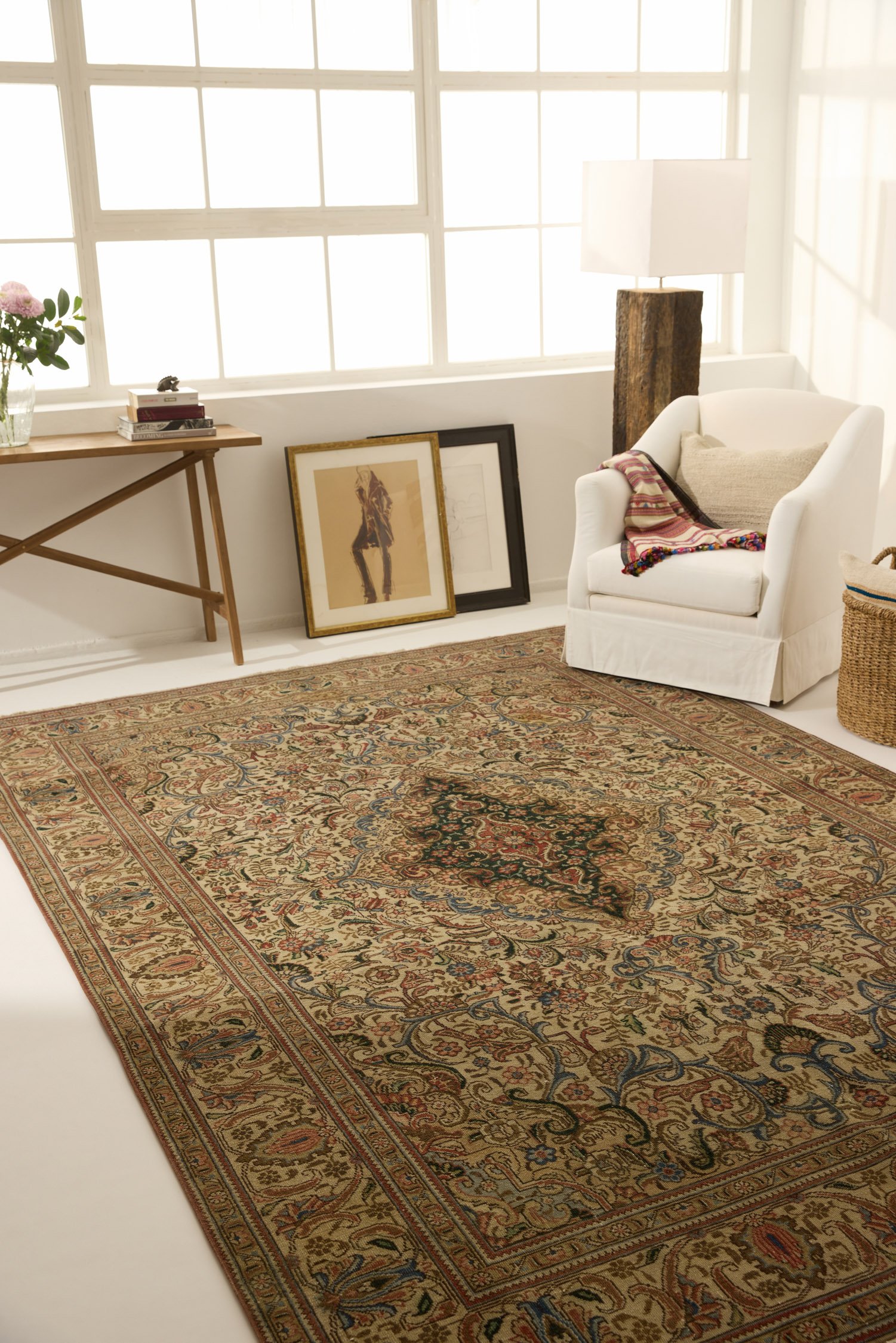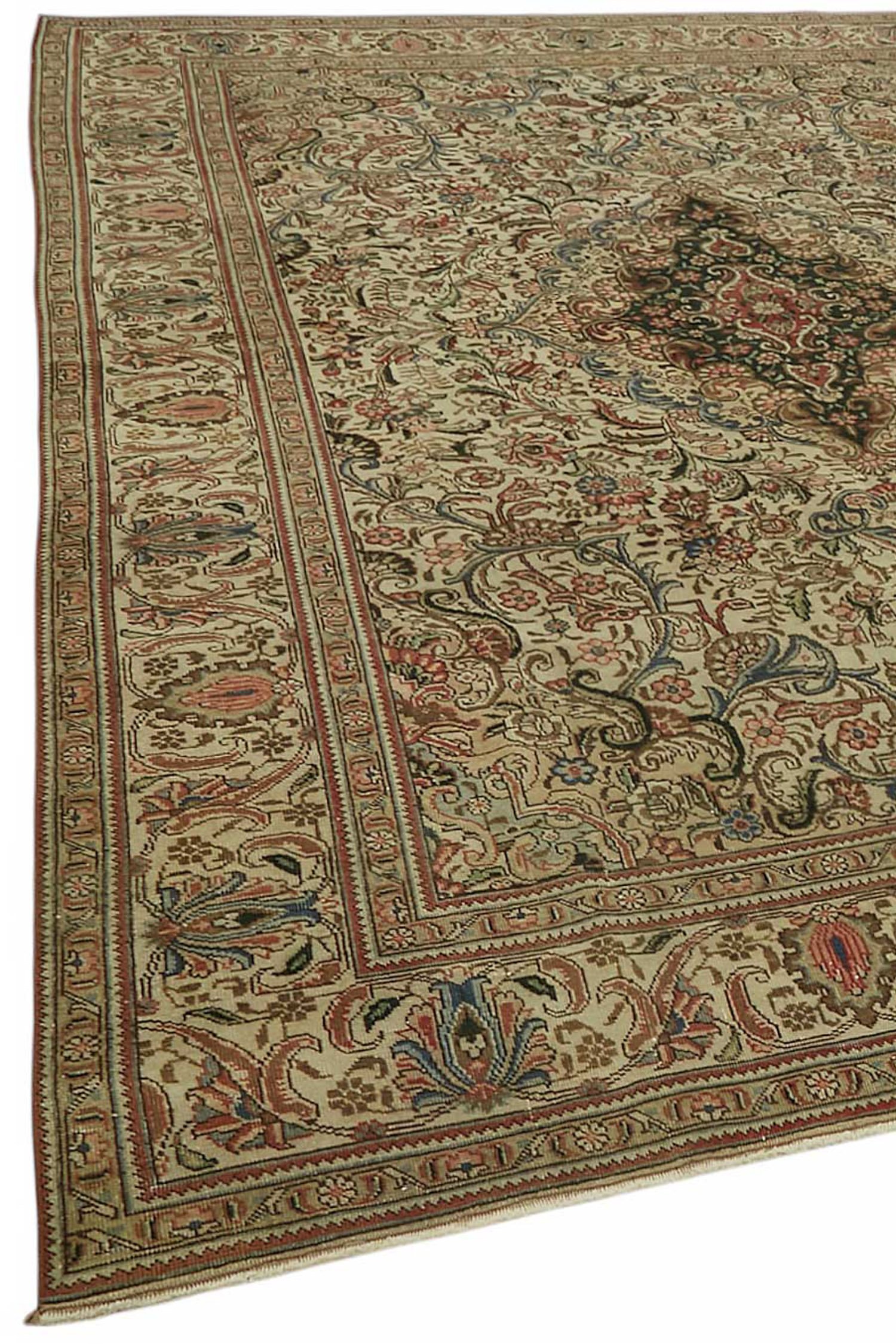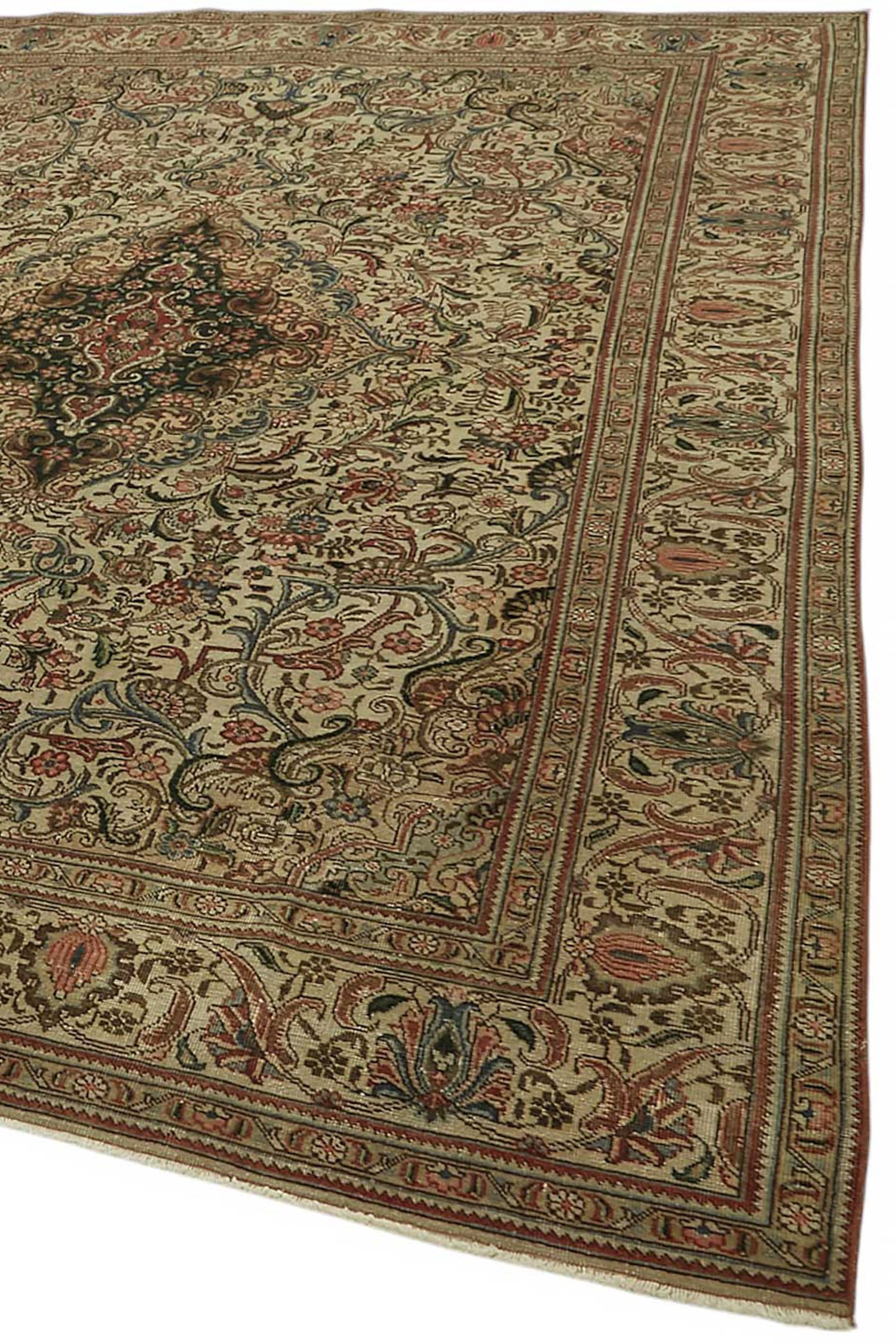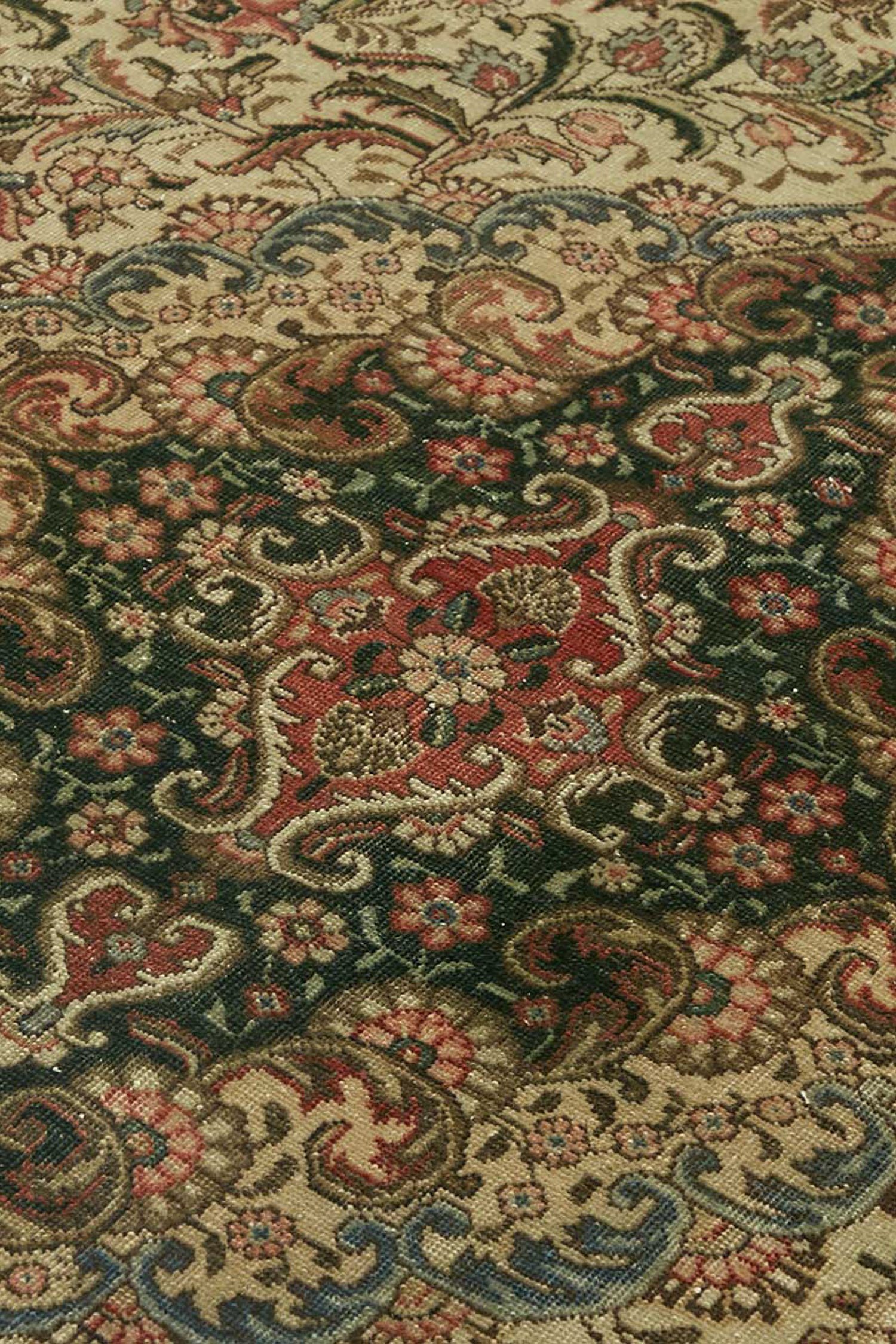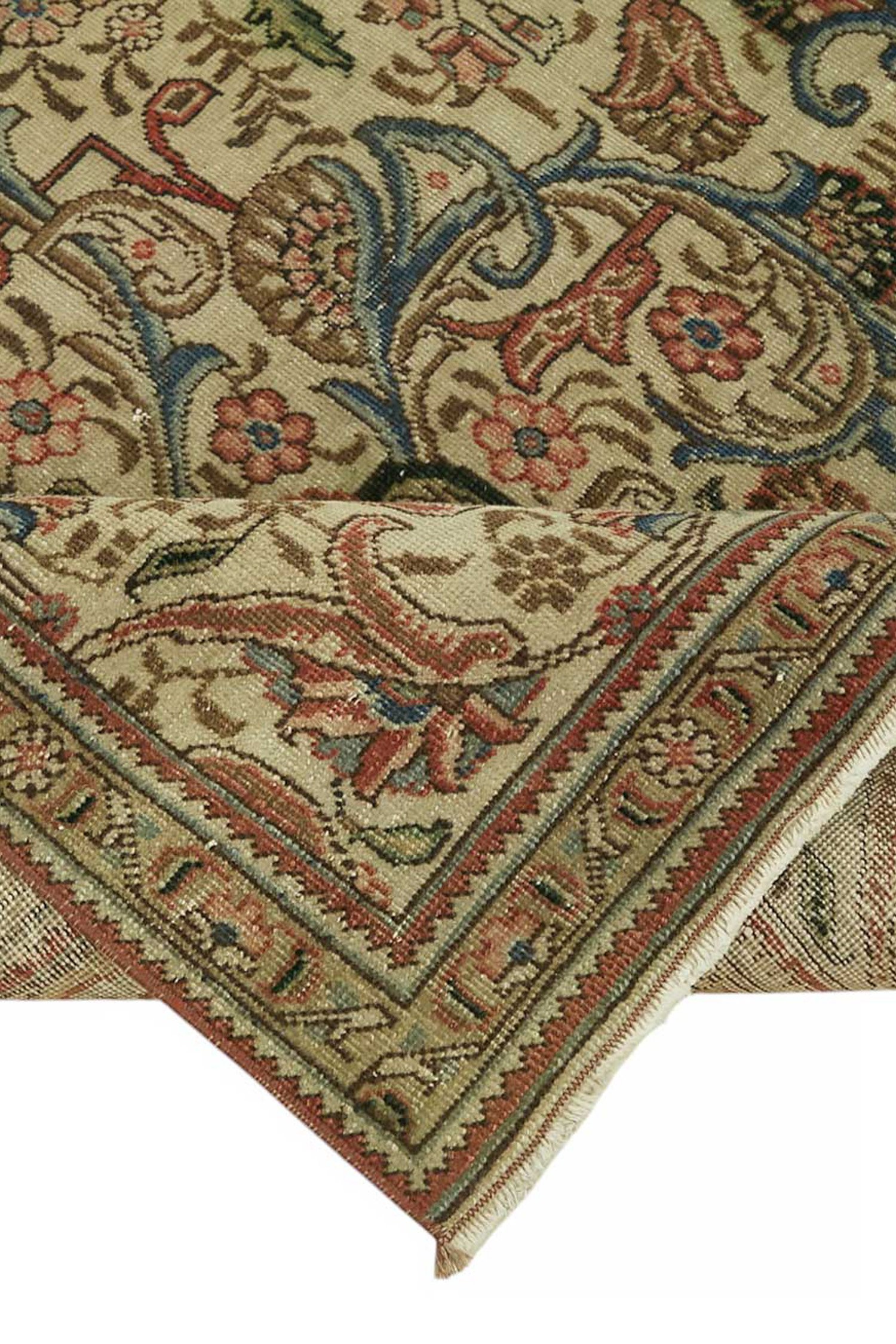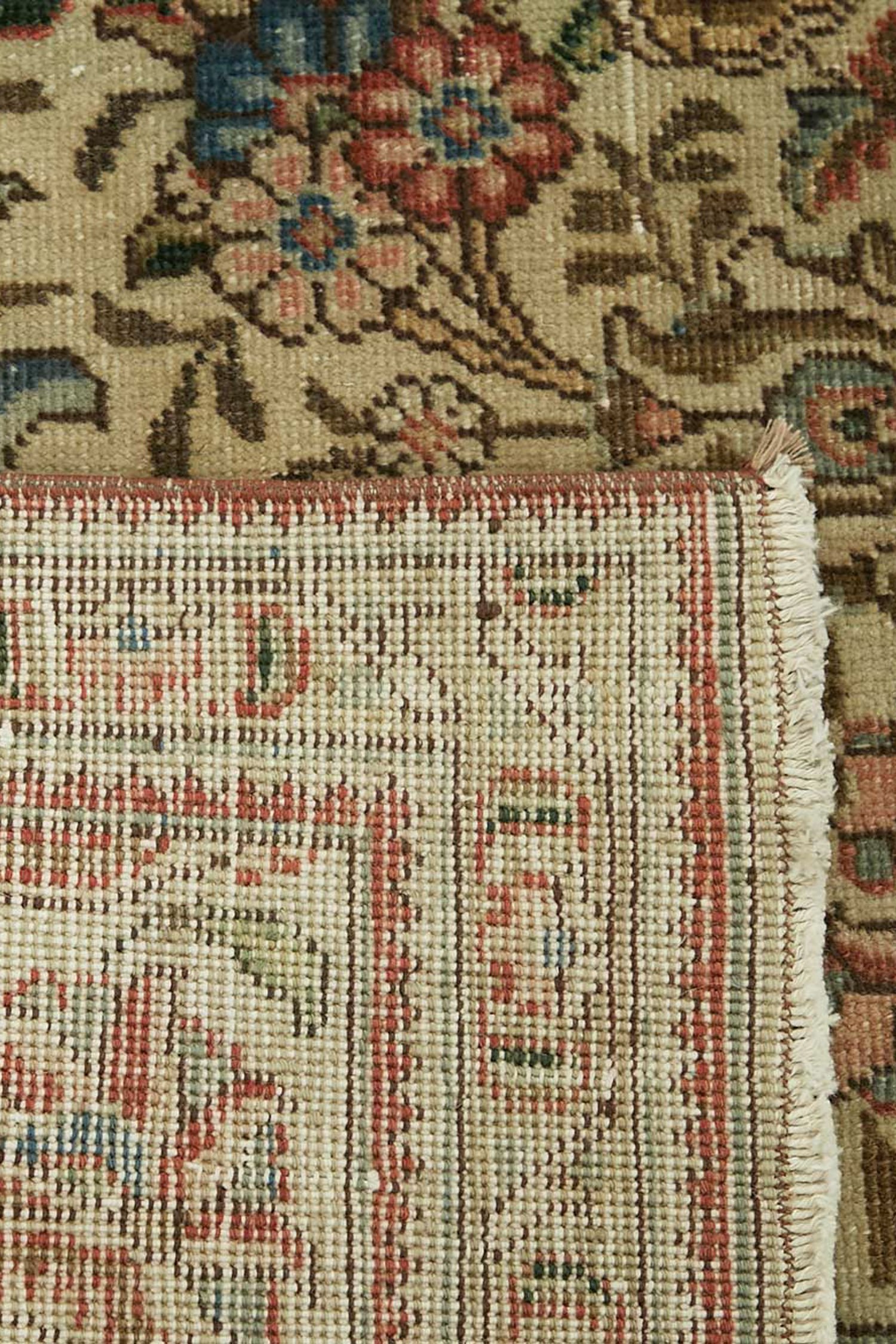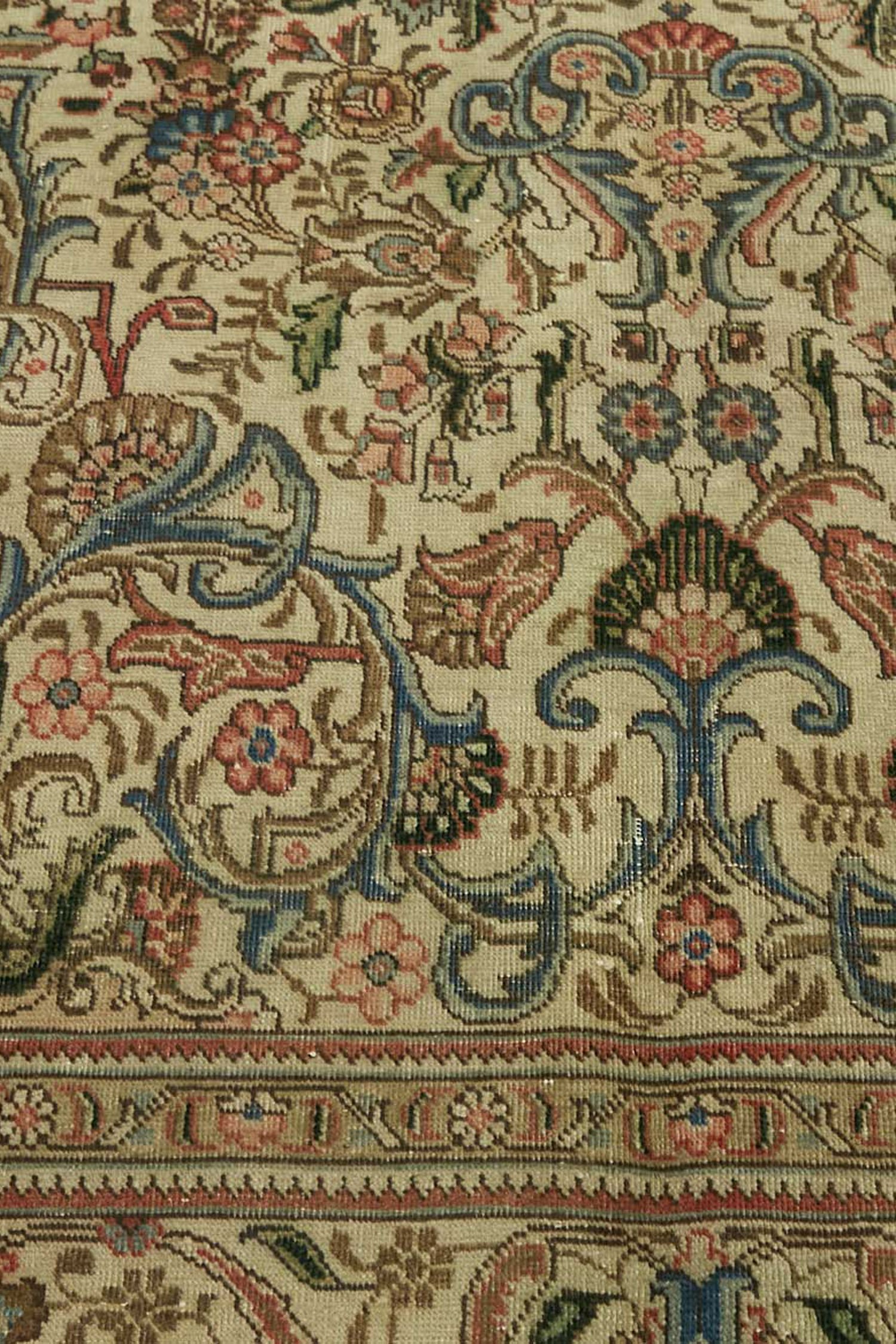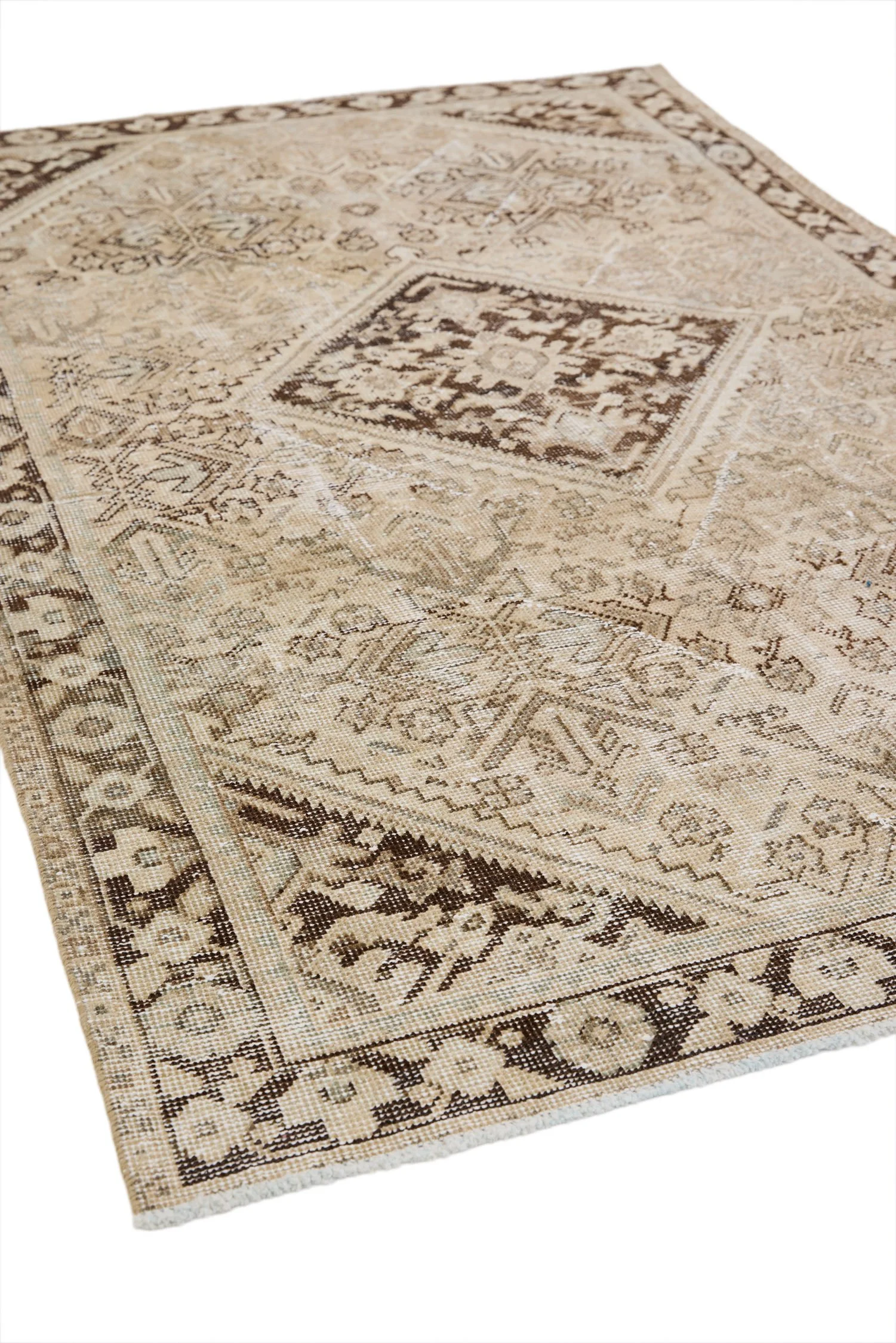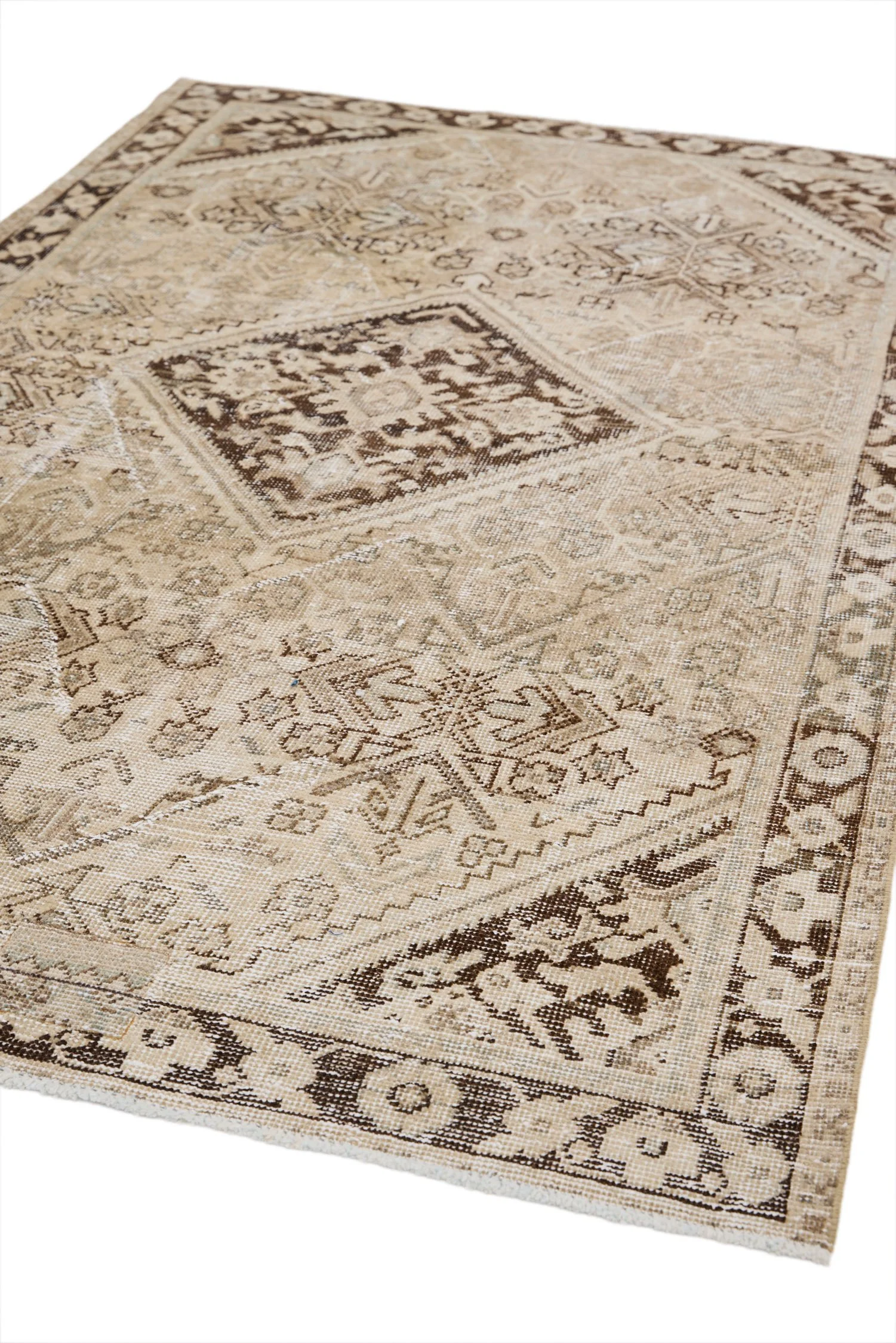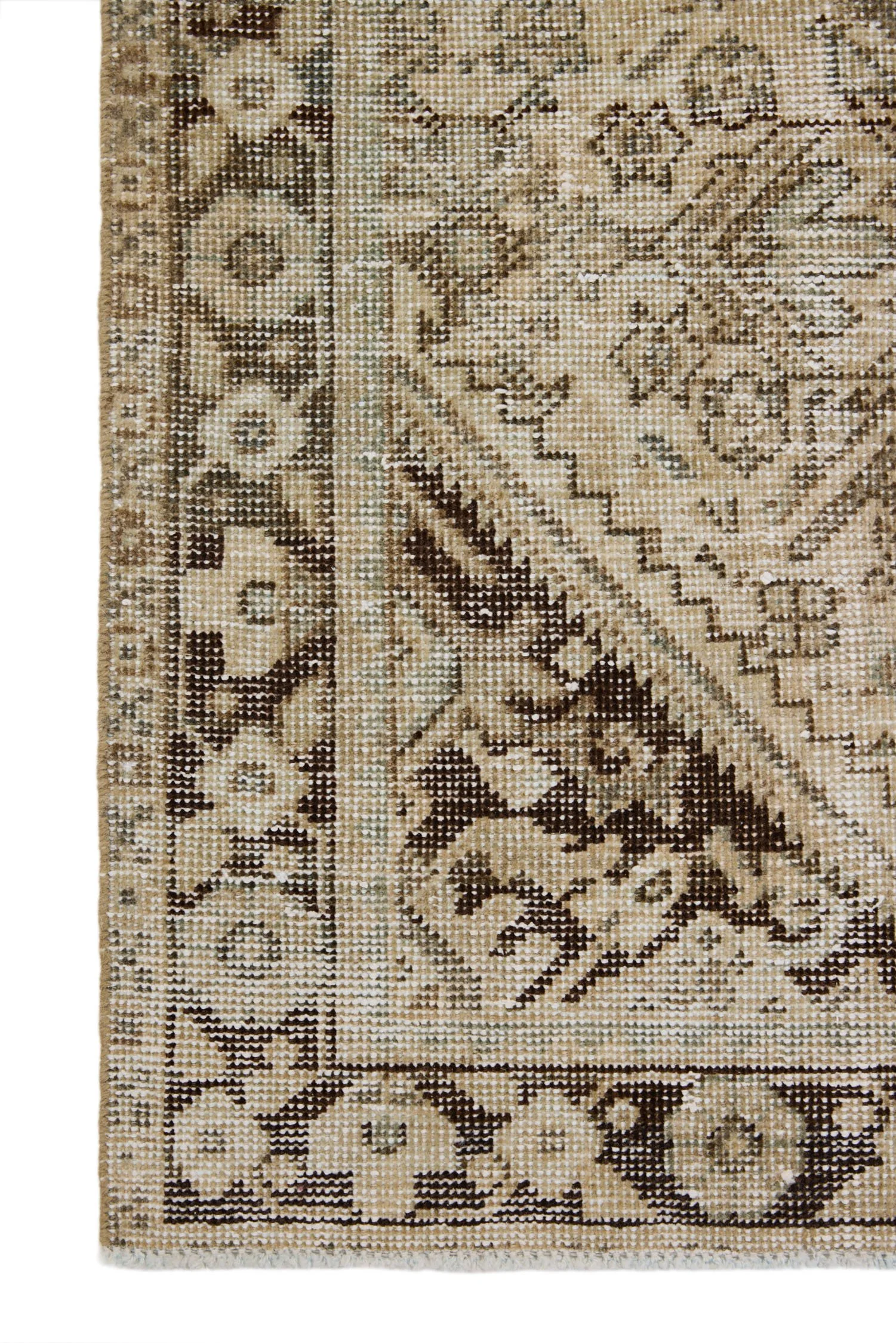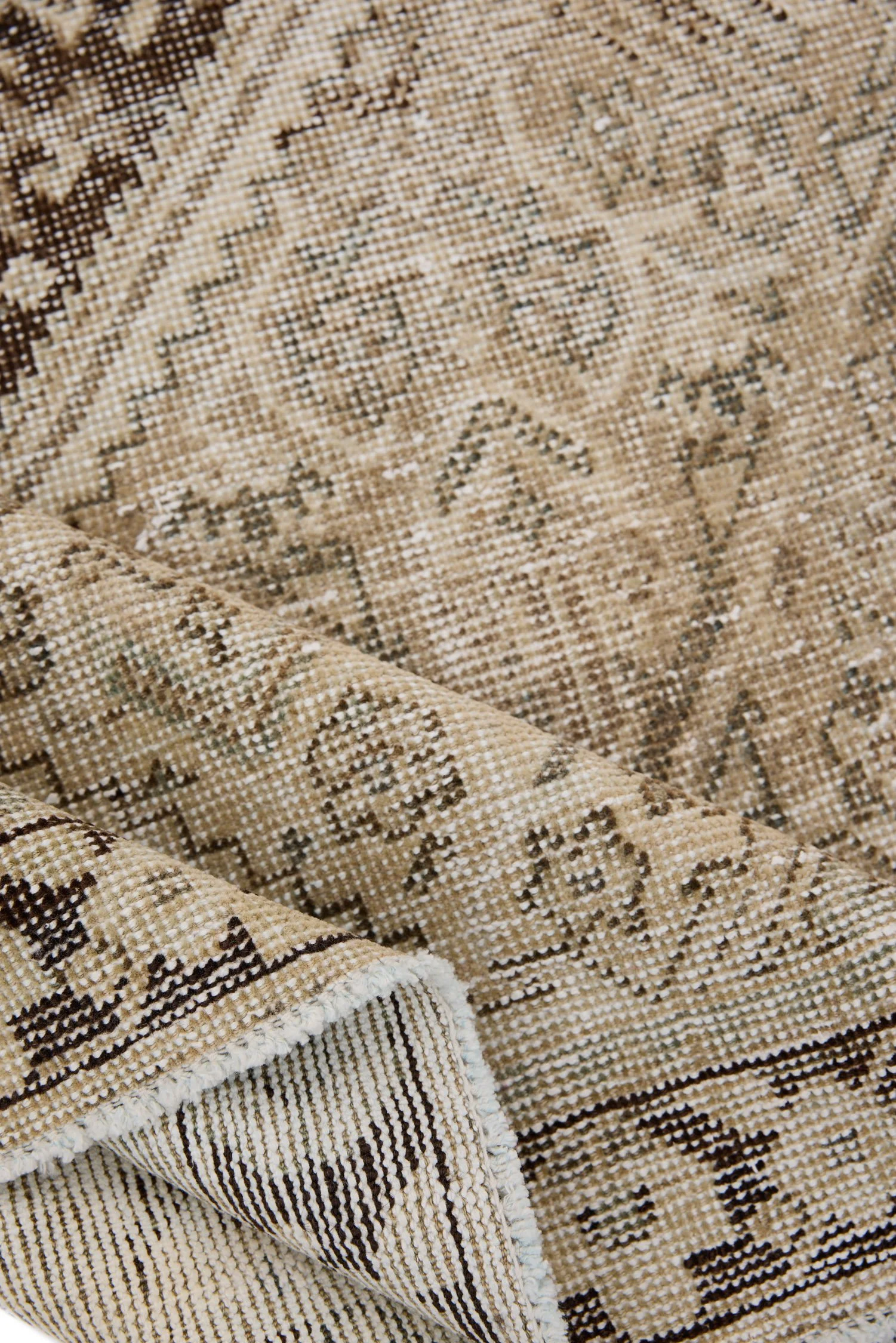Heritage and Craftsmanship
Mid-century Tabriz workshops maintained standards of knotwork density that allowed weavers to execute intricate patterns with remarkable definition. These urban production centers drew on centuries of design vocabulary while adapting to the aesthetic preferences of their era, resulting in pieces that honored tradition without being bound by it. The precision evident in these rugs reflects both the skill of individual artisans and the collaborative nature of workshop production, where pattern drawers, dyers, and weavers each contributed their expertise.
Design Elements
The diamond medallion anchors the composition with geometric clarity, its angular form repeated in modified versions throughout the field's lattice structure. This repetition creates visual coherence while allowing for subtle variations that keep the eye engaged. The densely patterned field demonstrates how Tabriz weavers balanced complexity with legibility, ensuring that individual motifs remained distinct even within an intricate overall design. Tiered borders add architectural weight, their layered structure providing both definition and transition between the rug's center and its edges.
Placement
At 9'3" x 12'7", this rug suits spacious living areas, dining rooms that accommodate larger tables, or primary bedrooms where scale matters. The earth-toned palette with mossy green and teal accents works within interiors that favor natural color schemes, while the geometric precision brings structure to spaces that might otherwise lack definition. Its size and balanced design make it effective as a room's anchor point, substantial enough to ground furniture arrangements while maintaining visual interest from multiple viewing angles.
Care Recommendations
To preserve the rug's beauty:
Rotate periodically for even wear
Vacuum regularly using a suction-only setting
Address spills immediately by blotting, never rubbing
Professional cleaning recommended annually
Avoid direct sunlight to maintain color integrity
Tabriz rugs from this period occupy a particular niche in the vintage market, appealing to those who appreciate technical excellence and refined design over more dramatic color palettes or distressed aesthetics. The clarity of pattern and precision of execution mean these pieces integrate well with both traditional and contemporary interiors, their geometric vocabulary translating across different design languages. They represent an approach to weaving where craftsmanship and artistry worked in service of creating functional beauty meant to endure generations.


